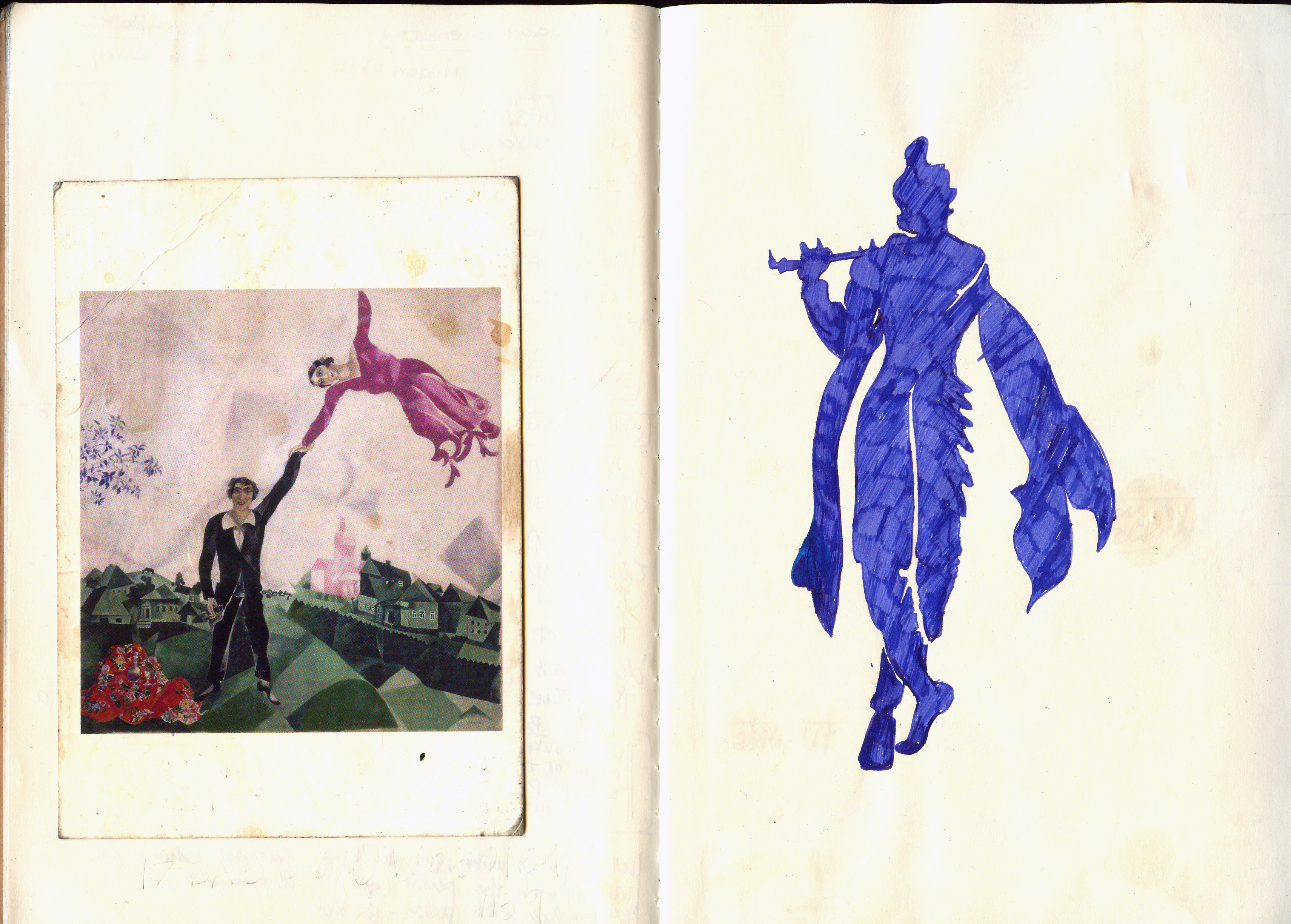
Art is a refuge from the busy hive of activity…and I’m lifted.
Sometimes I even float.
A fleeting instant, the diver coming up for air.
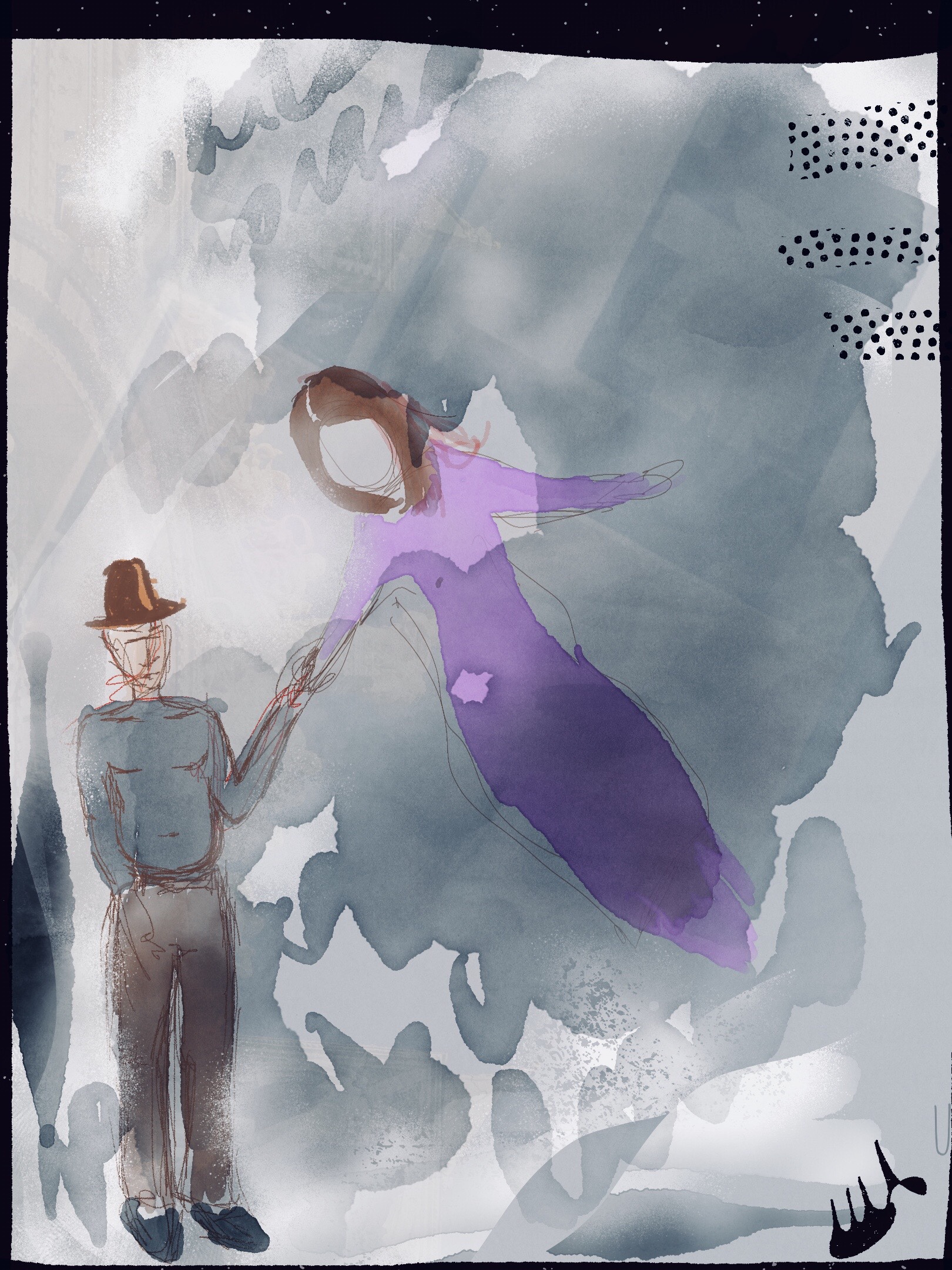
Posted in art, Art Journaling, art,poetry,writing, Digital Drawing, Ink, poetry, Quotes, sketchbook, sketching on January 25, 2020| Leave a Comment »

Art is a refuge from the busy hive of activity…and I’m lifted.
Sometimes I even float.
A fleeting instant, the diver coming up for air.

Posted in art,poetry,writing, sketchbook, sketching, Thinking with my hands, Tutorial, visual journal, tagged Drawing, ink, jazz, musician, sketchbook, Texture on January 26, 2019| 1 Comment »
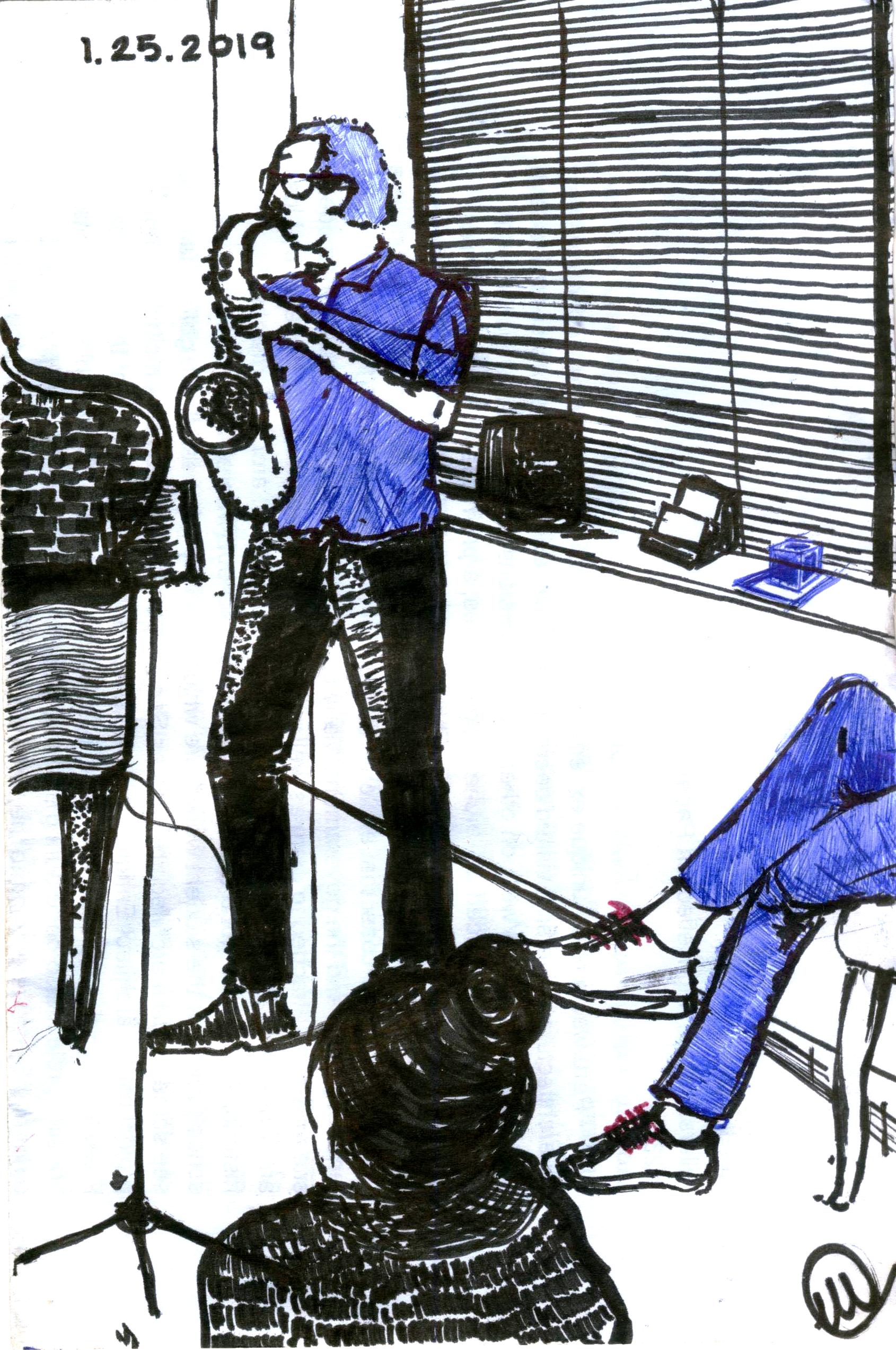
Well, Happy New Year.
I think it’s valid to still say that, as long as we are still in January.
Last night I attended the last Friday night Jazz at the Handlery Hotel. I had only some copy paper, a bic pen and an Arabic calligraphy in my bag ..but was so thirsty for drawing that I started something I was hoping would just be an exercise…but I’m actually happy with it.
I am sure You, Single Reader, have been wondering if the Earth swallowed me whole…
Since my last post I visited Oaxaca, Mexico, then was in New York (each for a long weekend) and finally, in Milano for the Christmas holidays.
Instagram is the reason I have neglected my blog..it is much easier and more immediate to share work there..where in here the point is to craft each post. But I am here today because (thankfully) the Instagram Gods thought my drawing too long to post it there in its entirety..and so I am following my own advice (which I never do) and posting here first..and then a “teaser” on IG.
I have been working on a long New York poem, and still have to share my photos and a drawing from there…same with Oaxaca. I also have couple of artist features to share with you (and which you will love). But, this shall suffice for now…the demands of life and career are calling me- the forces which prey me away from my craft and from this digital room which is my calm and my natural habitat.
The good news is that I am teaching a Drawing/Representation course for design (not Architecture) students, so I have been practicing what I preach. And, there is more freedom and anarchy to be outside of the realm of my chosen profession.
Until soon…..
Here is to closing parenthesis.
Posted in art, art,poetry,writing, Drawing, Graphic Design, Graphite, Ink, Los Angeles Diaries, Music, Painting, Quotes, school, sketchbook, sketching, wanderlust, Watercolor, tagged Drawing, experiments, ink art, napkin sketches, sketches, Sketches App, Tayasui, watercolor markers, Yann Tiersen on June 30, 2018| 1 Comment »
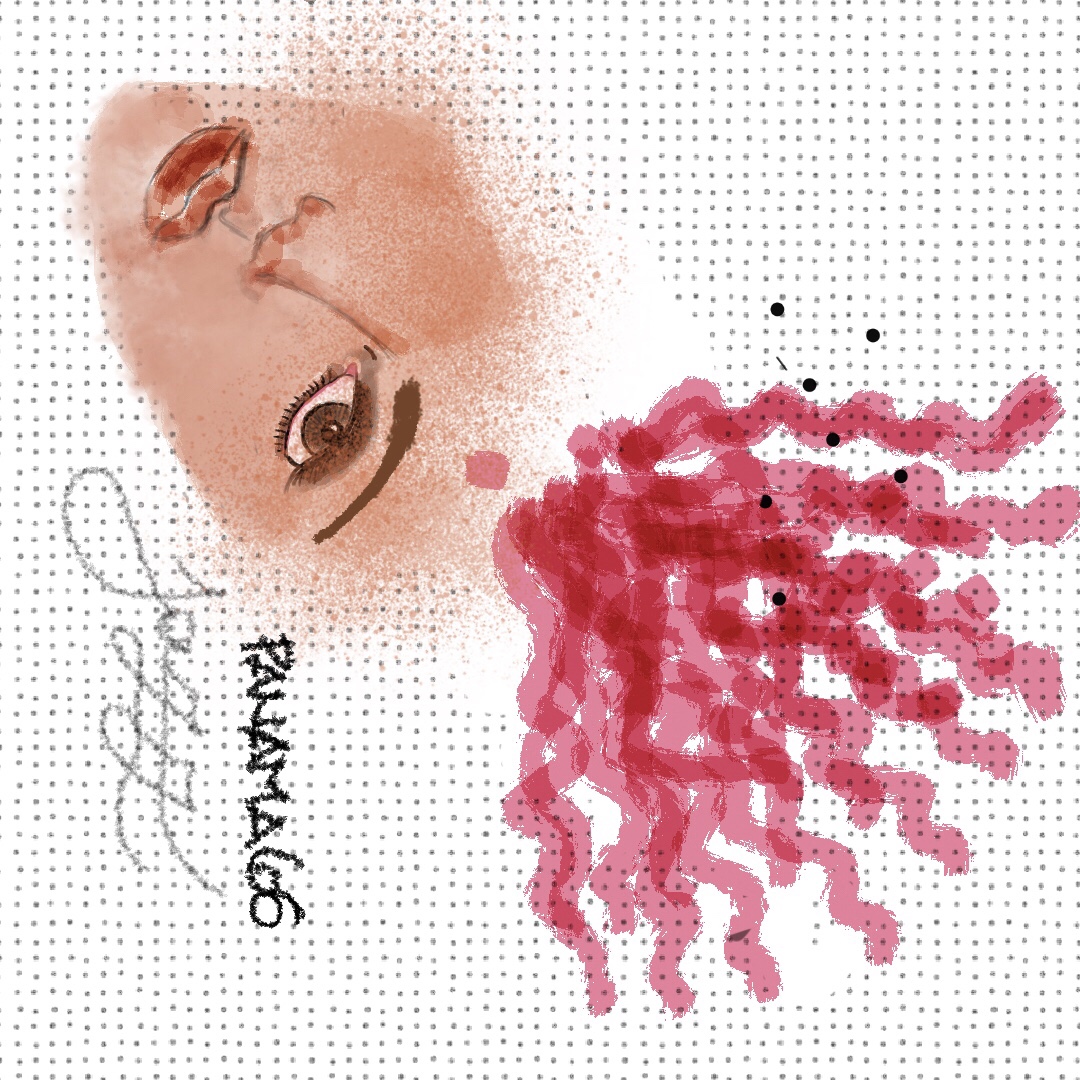
Digital drawing done on IPhone 7 Plus with Sketches app by Tayasui. June 27, 2018.
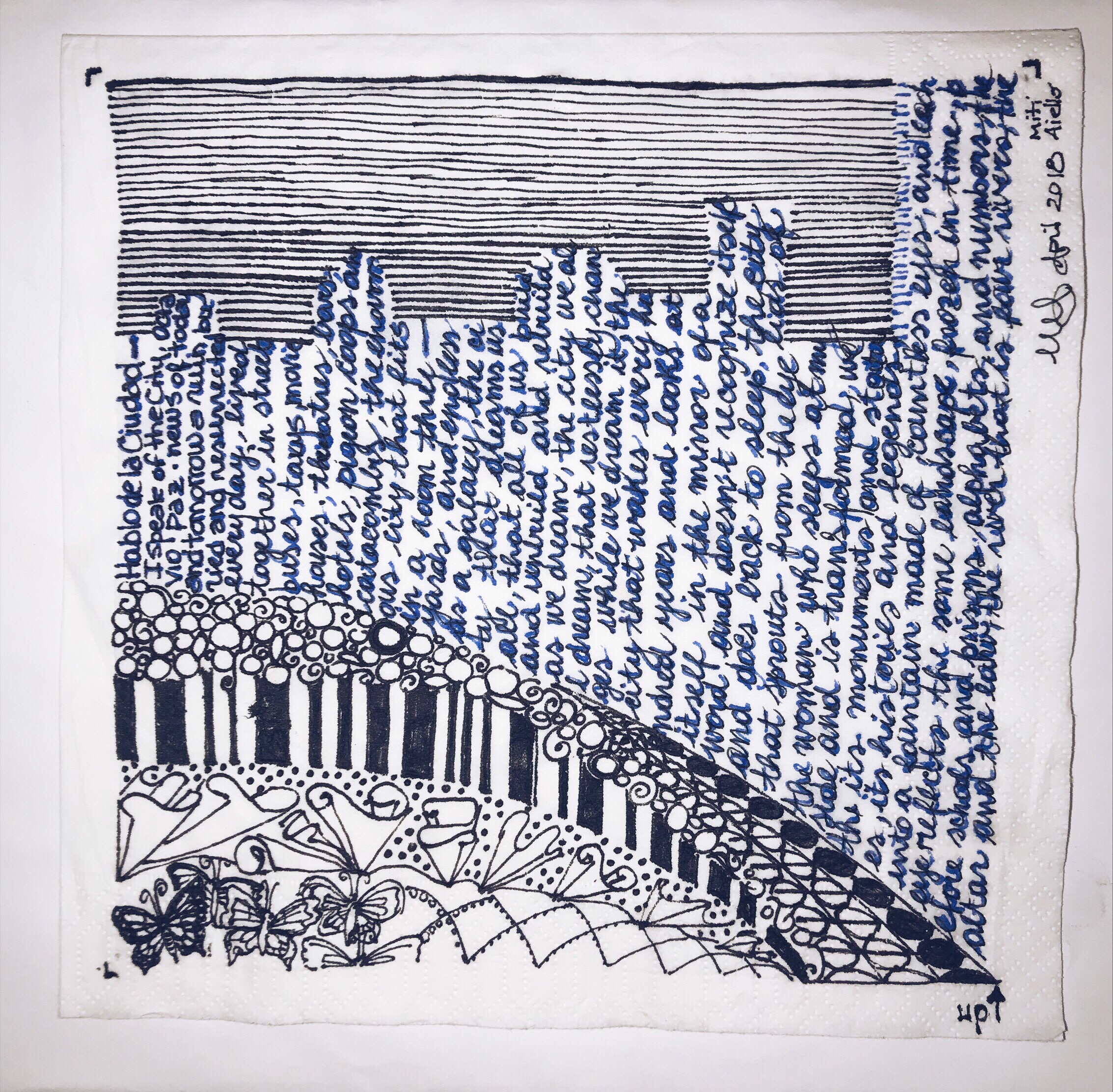
Napkin Sketch for fundraiser auction; poem La Ciudad by Octavio Paz. Fountain ink on Napkin paper. April 2018.
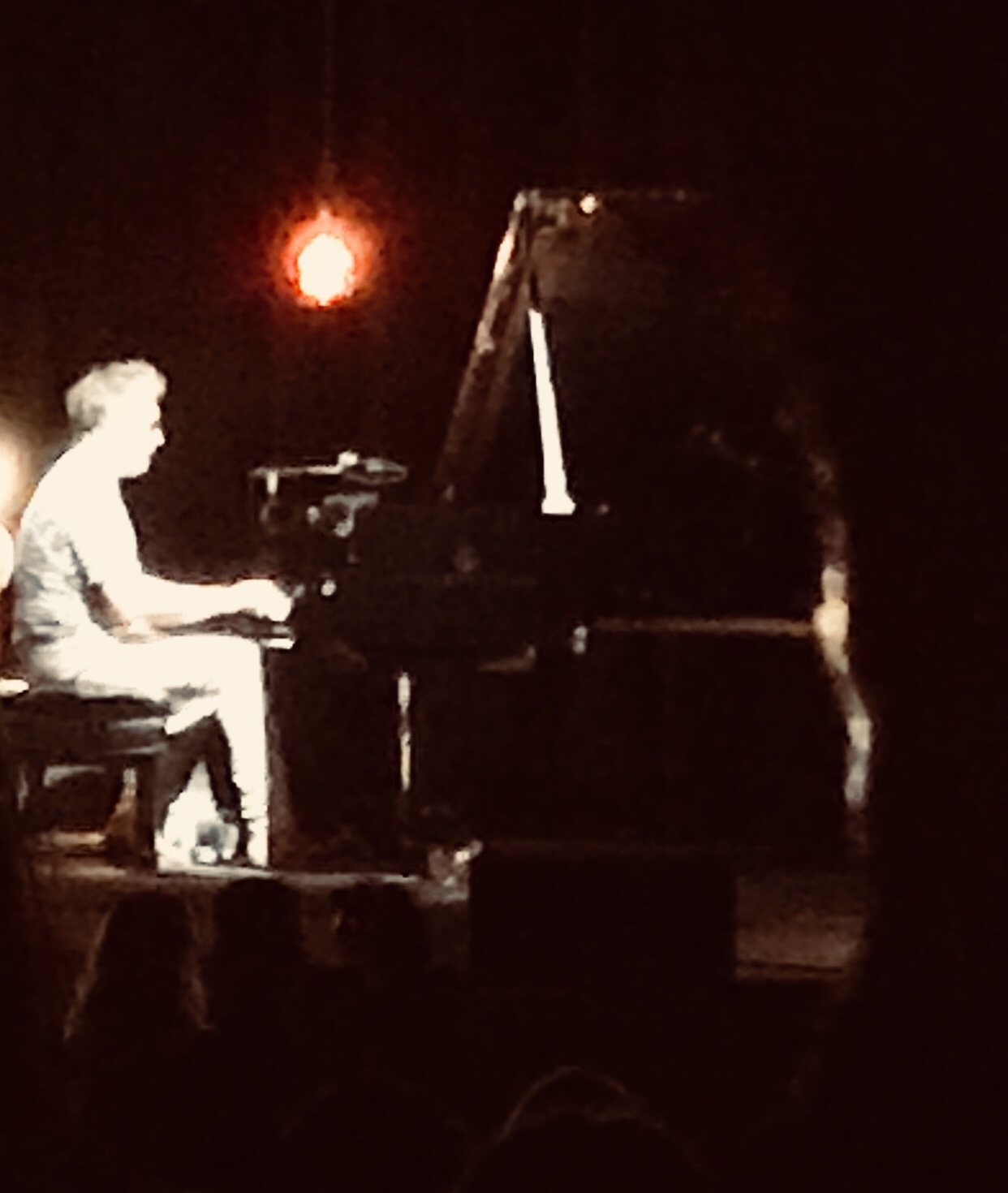
Yann Tiersen in concert at the Theatre at the Ace Hotel in Los Angeles, June 20, 2018.
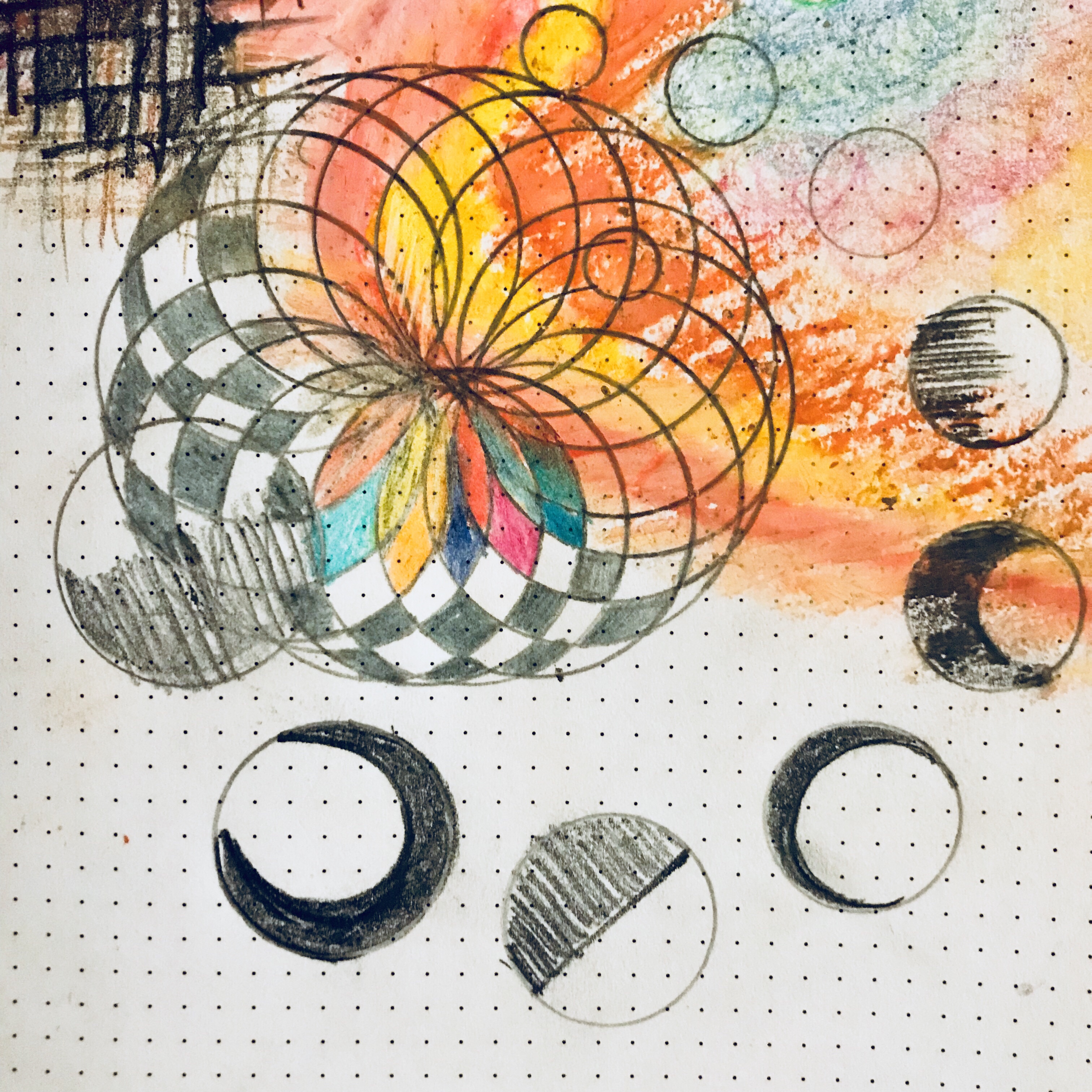
Quick sketch using colored pencil and pastels. June 30, 2018.
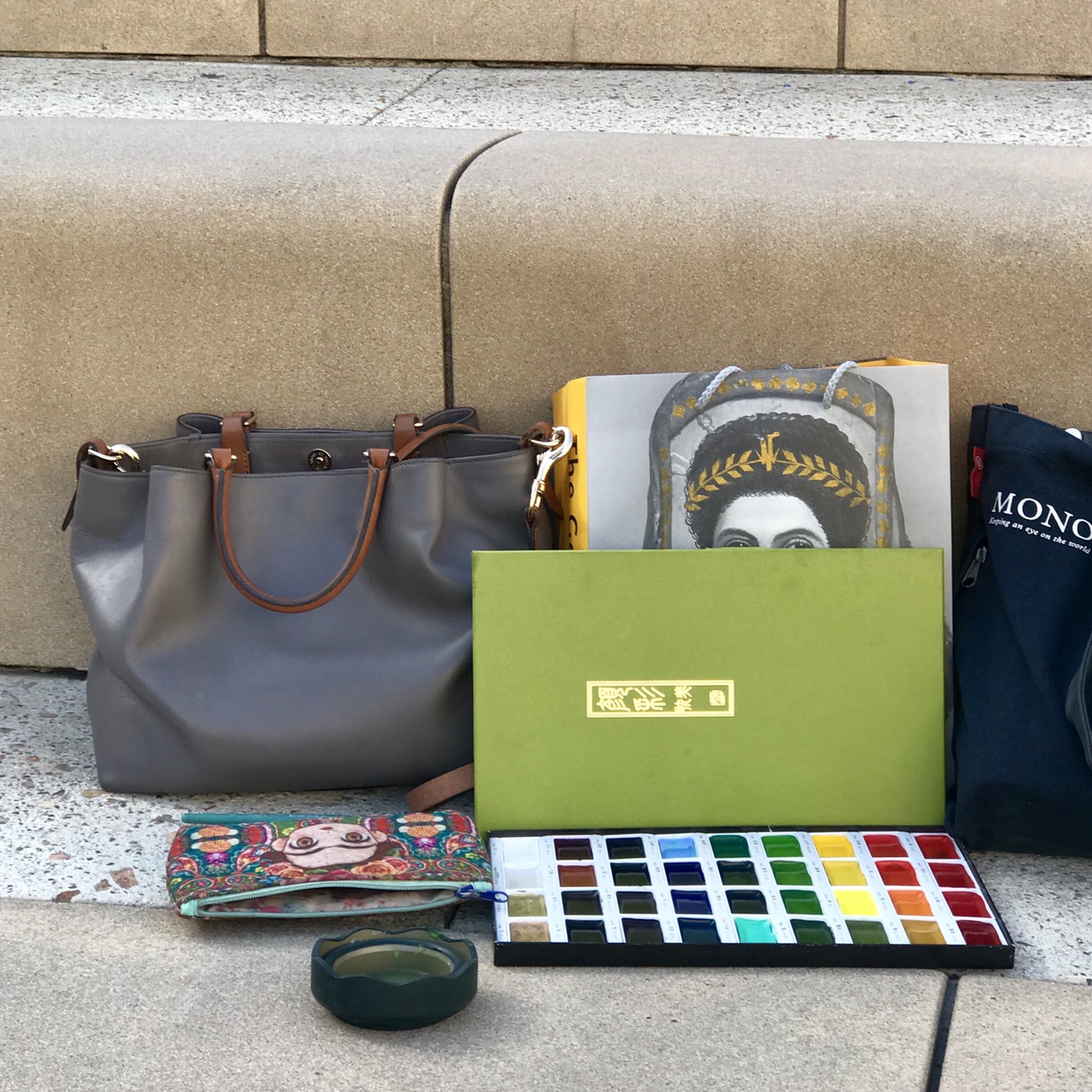
My corner in the plaza of the Getty Villa in Los Angeles. June 2018.
One more post before the month is done.
This Spring was filled with intensity in and outside of my University.. the final stretch of the school year. Accelerated timelines, accelerated heartbeat. Stealing time between deadlines to go up to LA once more for a life-changing Yann Tiersen concert ( of Amelie fame), participate to sketching and art+Jazz events and jot down few lines to be shared later (after all, poetry is emotion recollected in tranquillity).
Stealing time from time… to be and to feel alive. Sketching (almost) everyday is doing wonders for my spirit- and glow!
Single reader, I hope you have time to disconnect and renew. Happy Summer.
Posted in architecture, art,poetry,writing, Books, Drawing, Le flâneur, sketching, tagged books on New York, flaneur, new york, New York bookstores, sketching on January 1, 2018| 2 Comments »
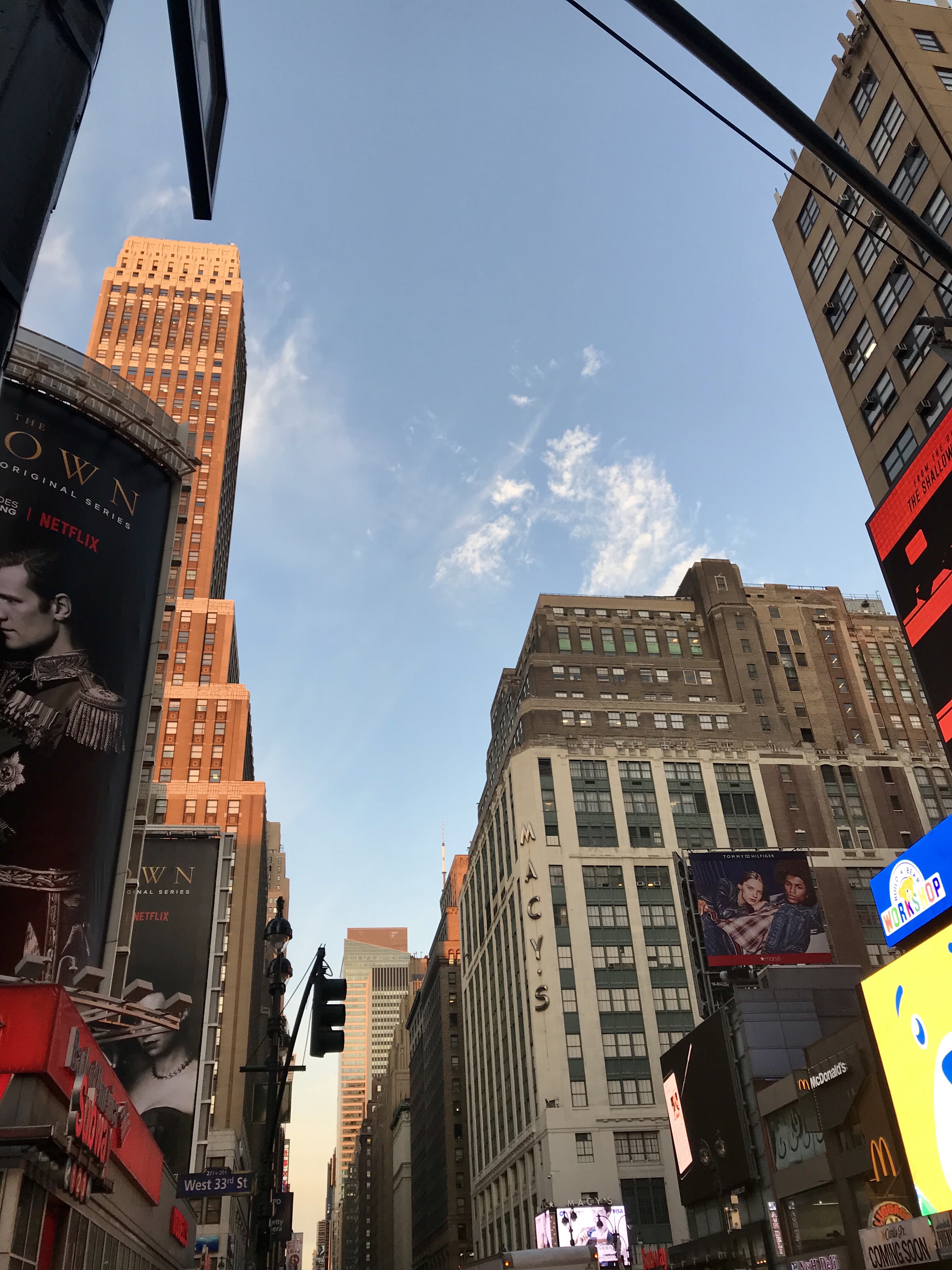
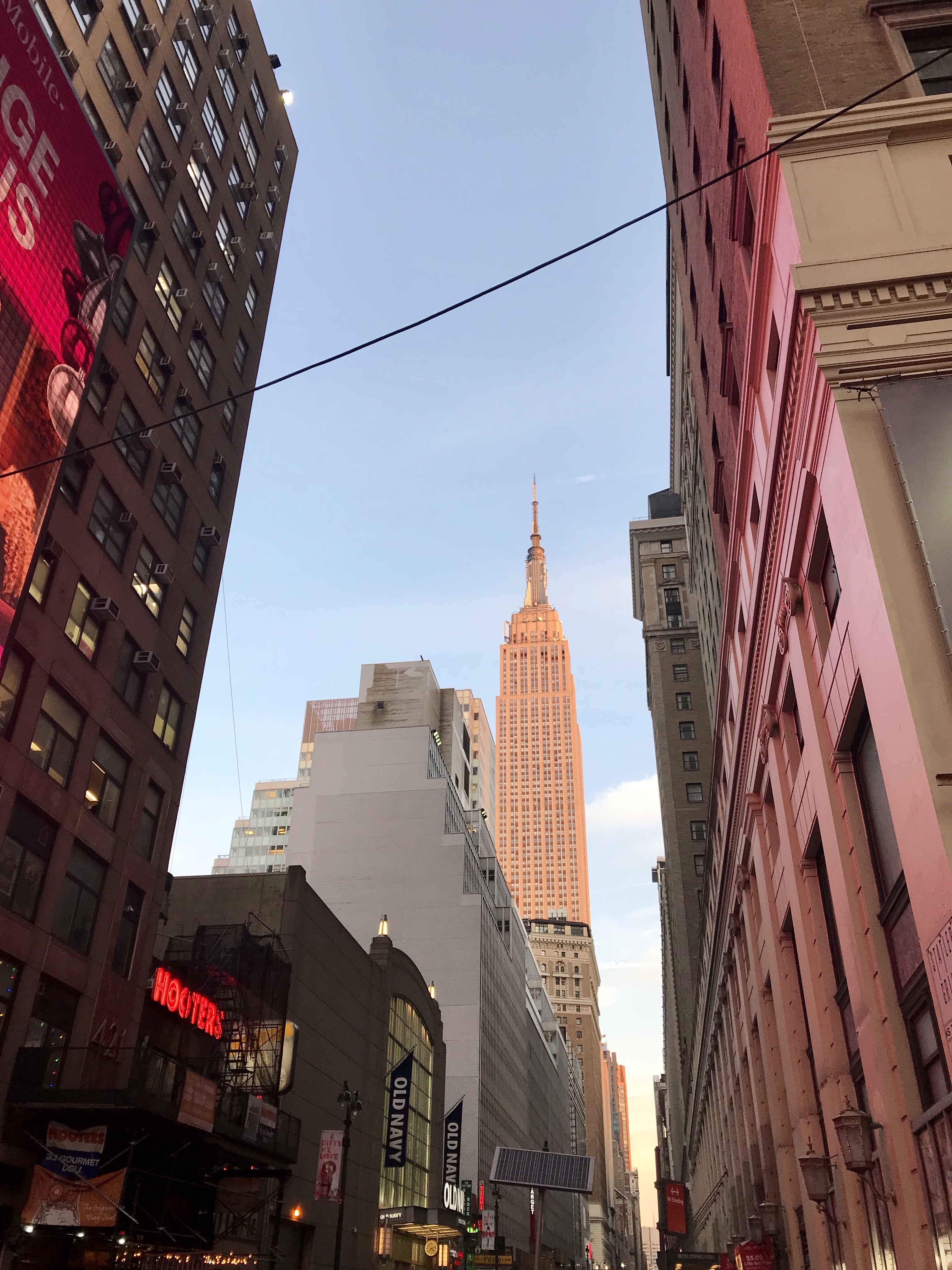
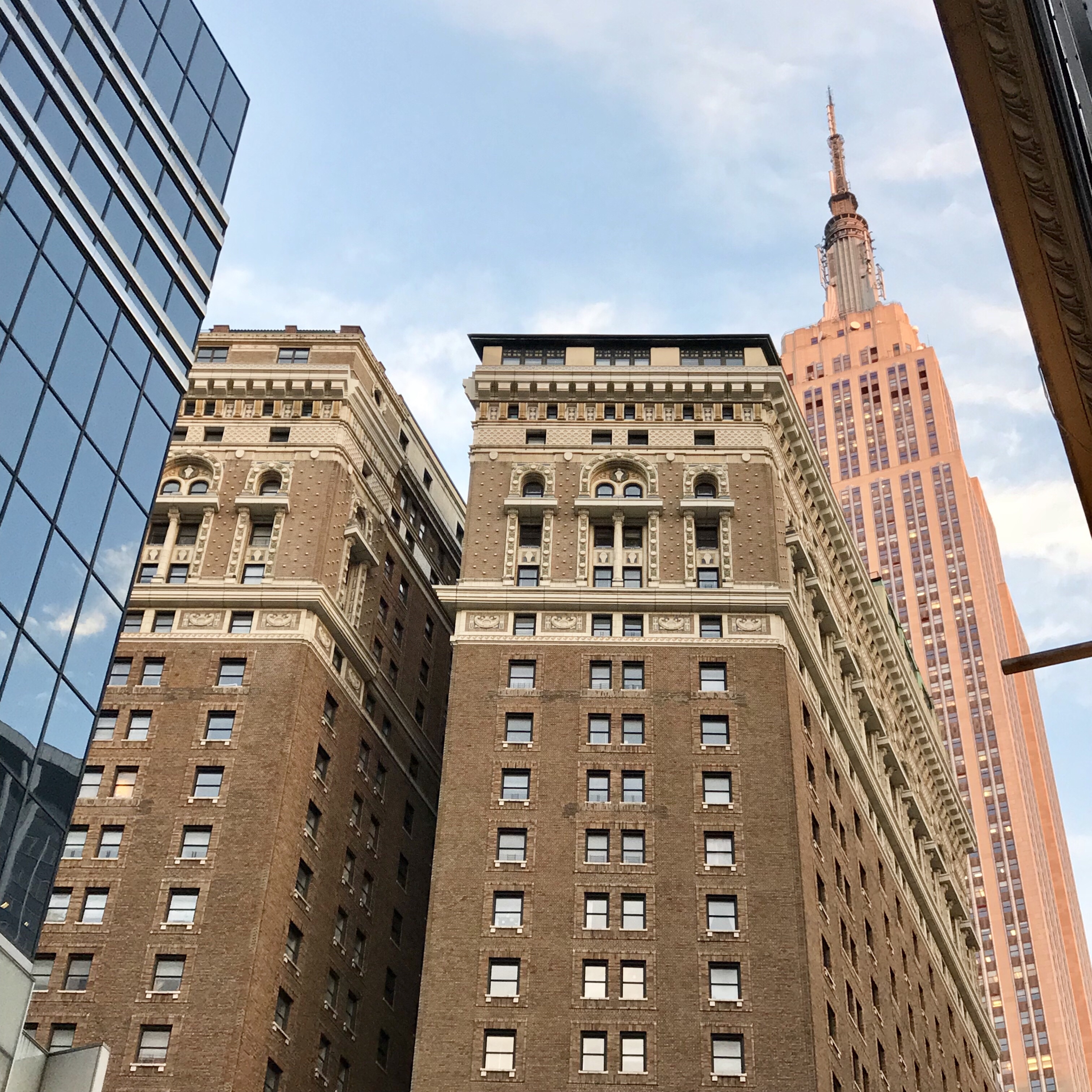
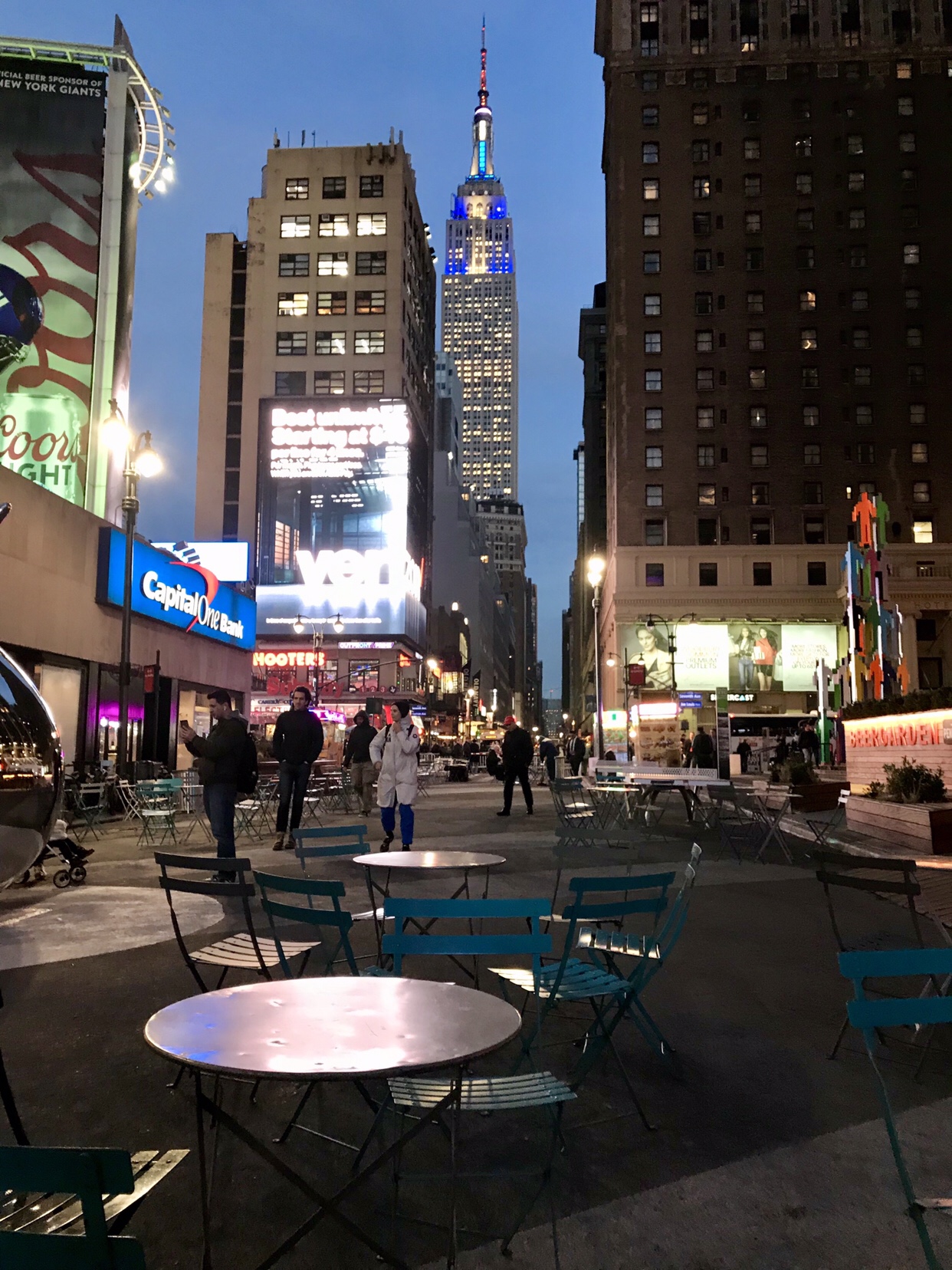
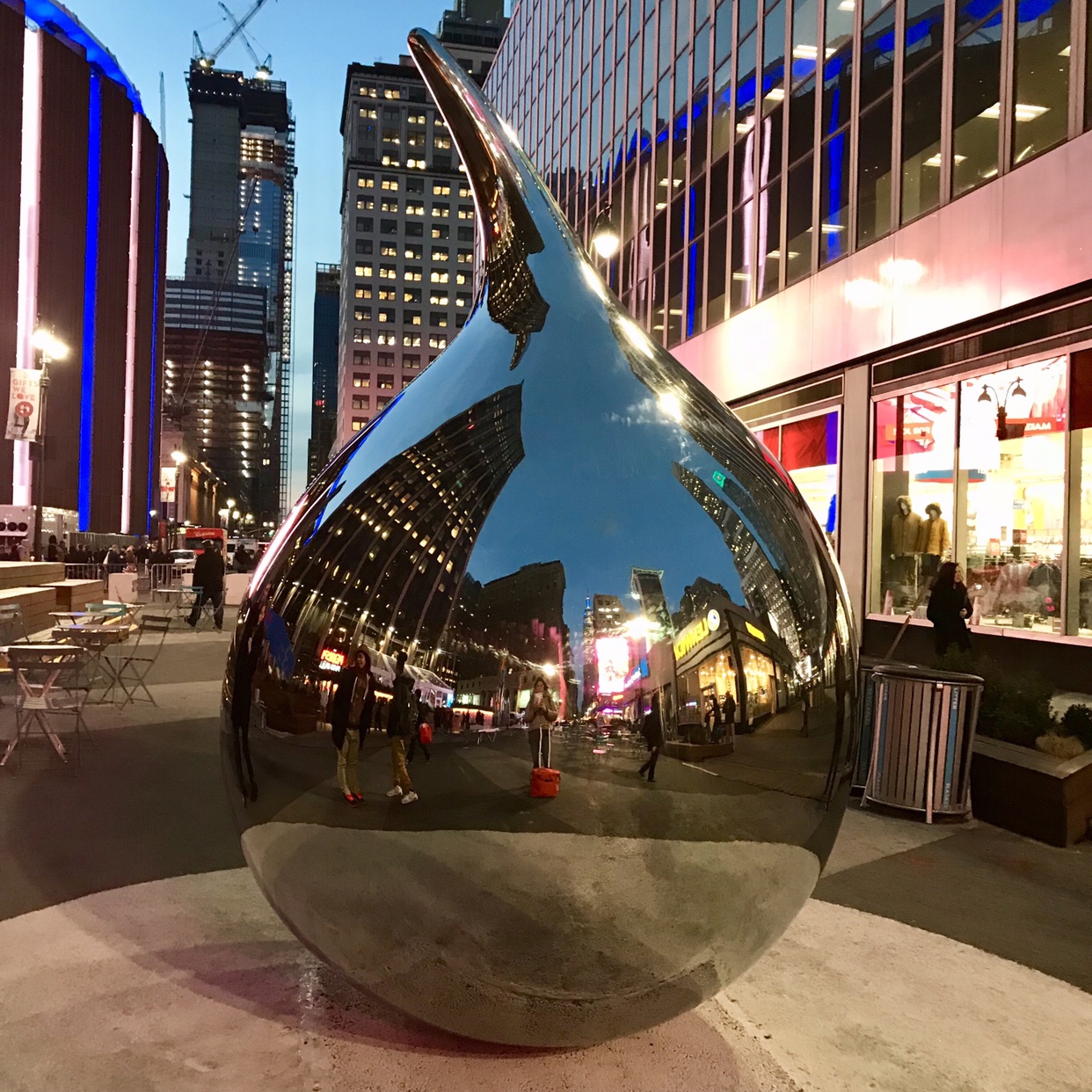
Three hours in New York City in December. Some flânerie and a visit to one excellent bookstore. A dose of “cityness”.
New York has been called the capital of the twentieth century and an architectural battleground. Here are some of the stories I found at Rizzoli.
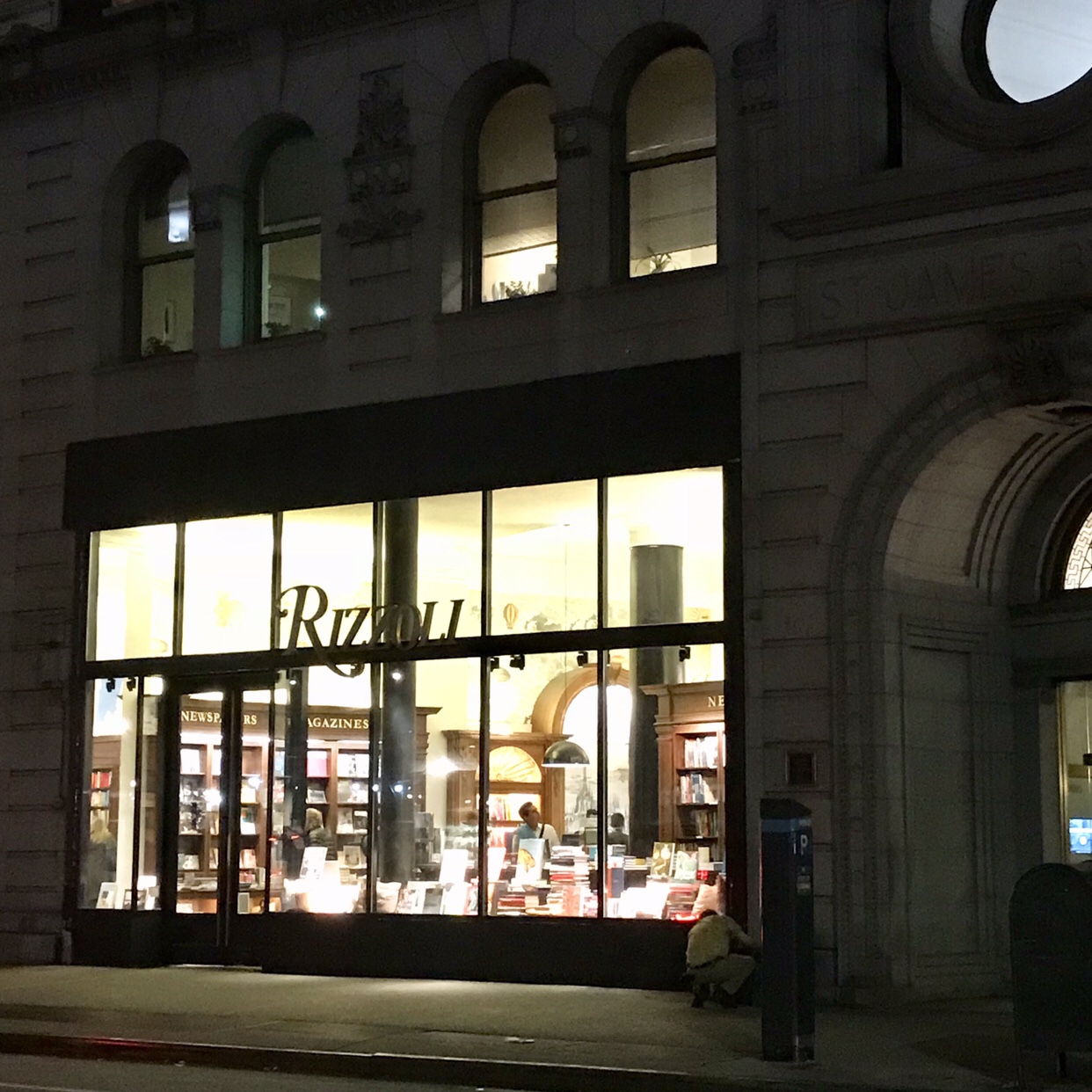
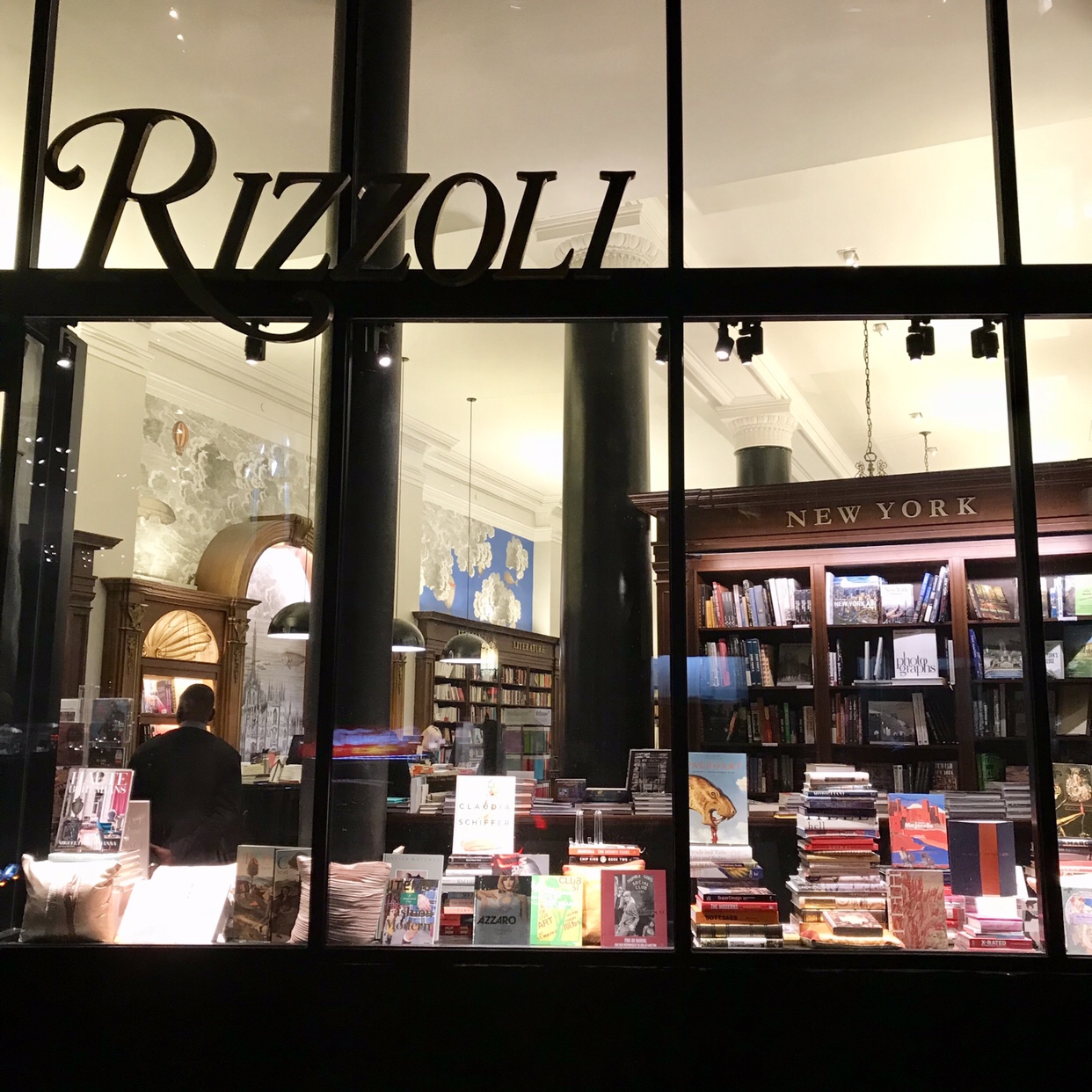
The playful books of architectural sketches (i also found this and this at the Museum of Contemporary Art store in the airport) reminded me that flawless execution is not as important as
1) discovering your own graphic “voice”
and
2) developing the trust, consistency and playfulness needed to making it heard.
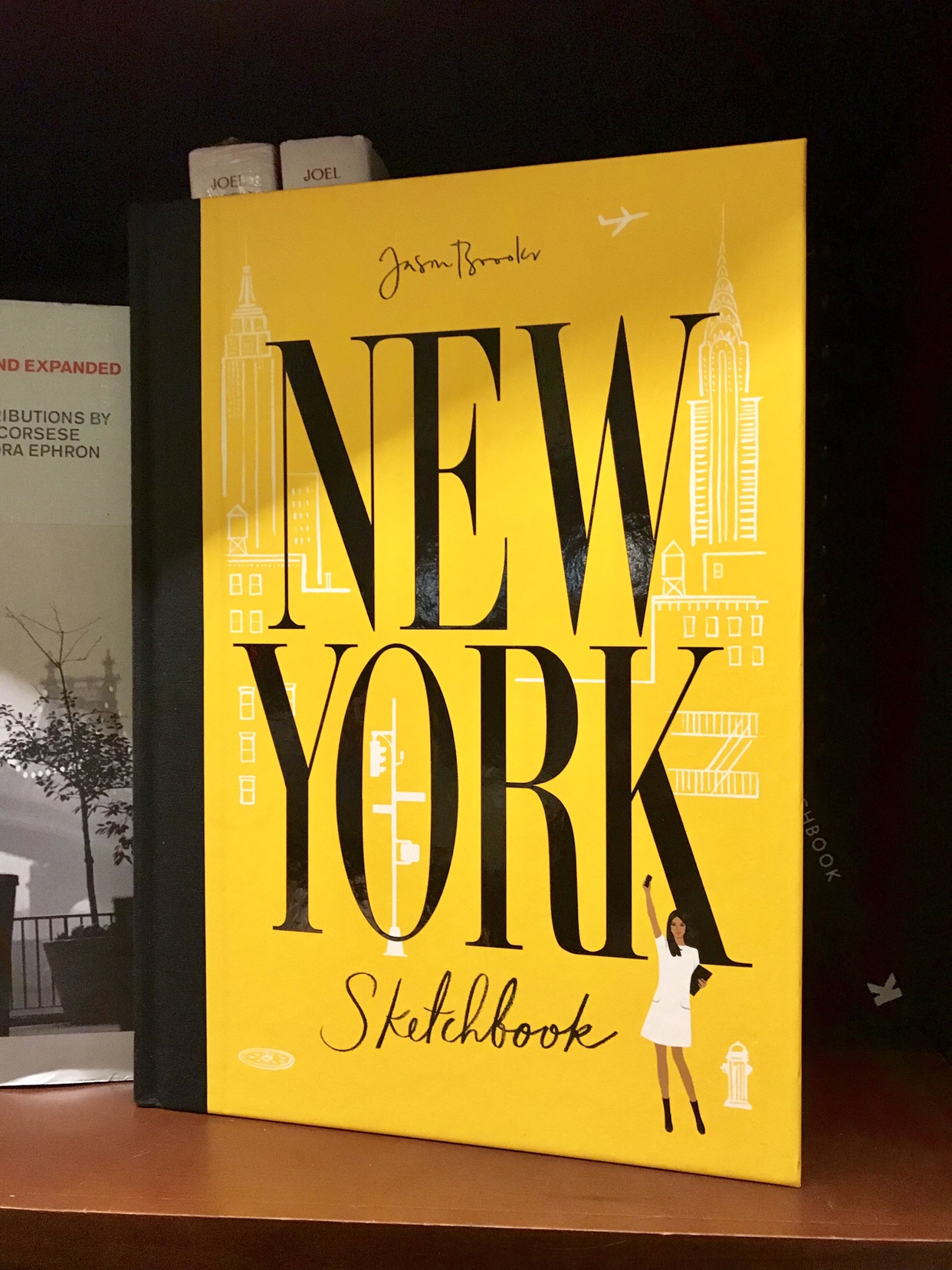
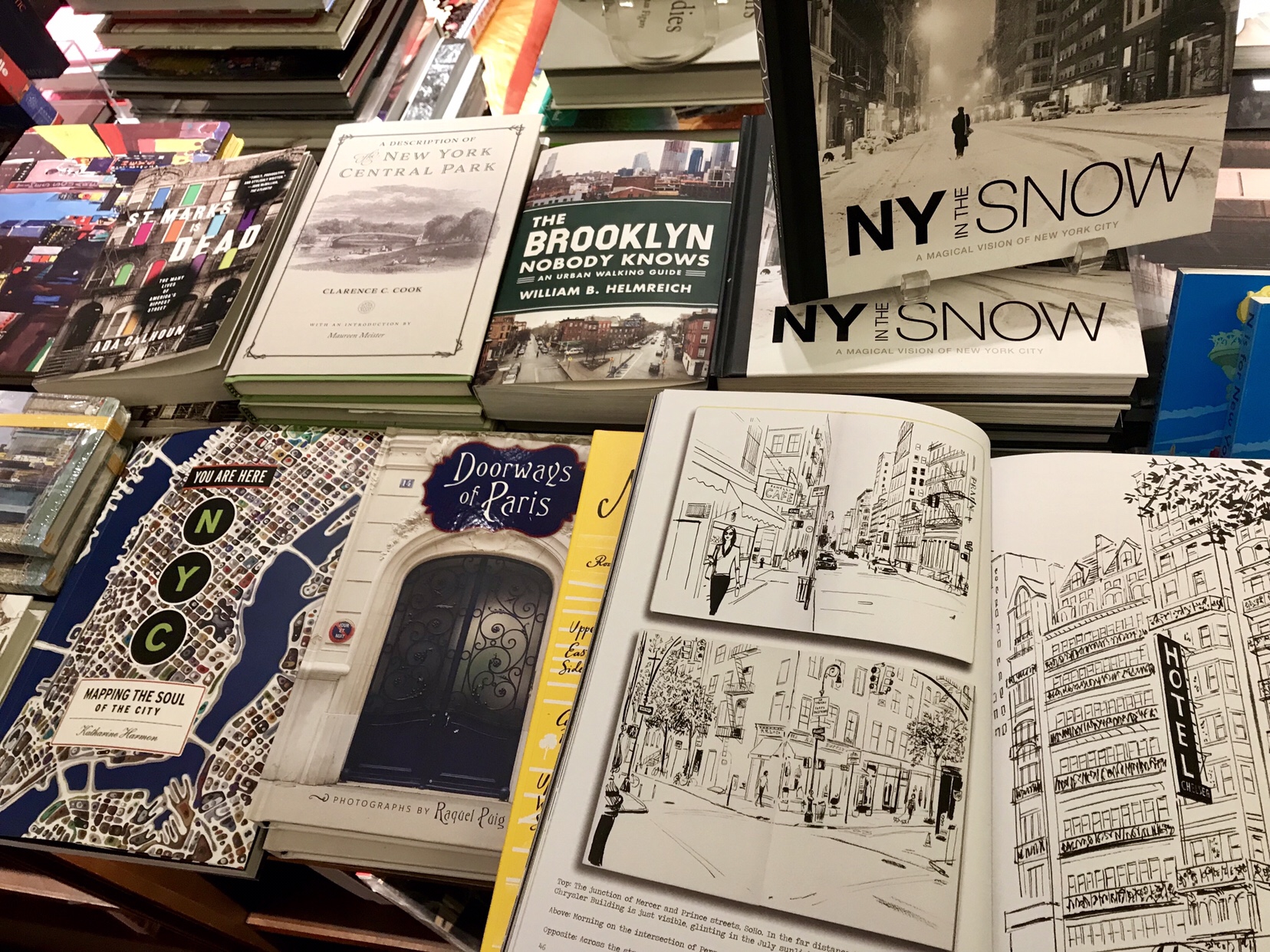
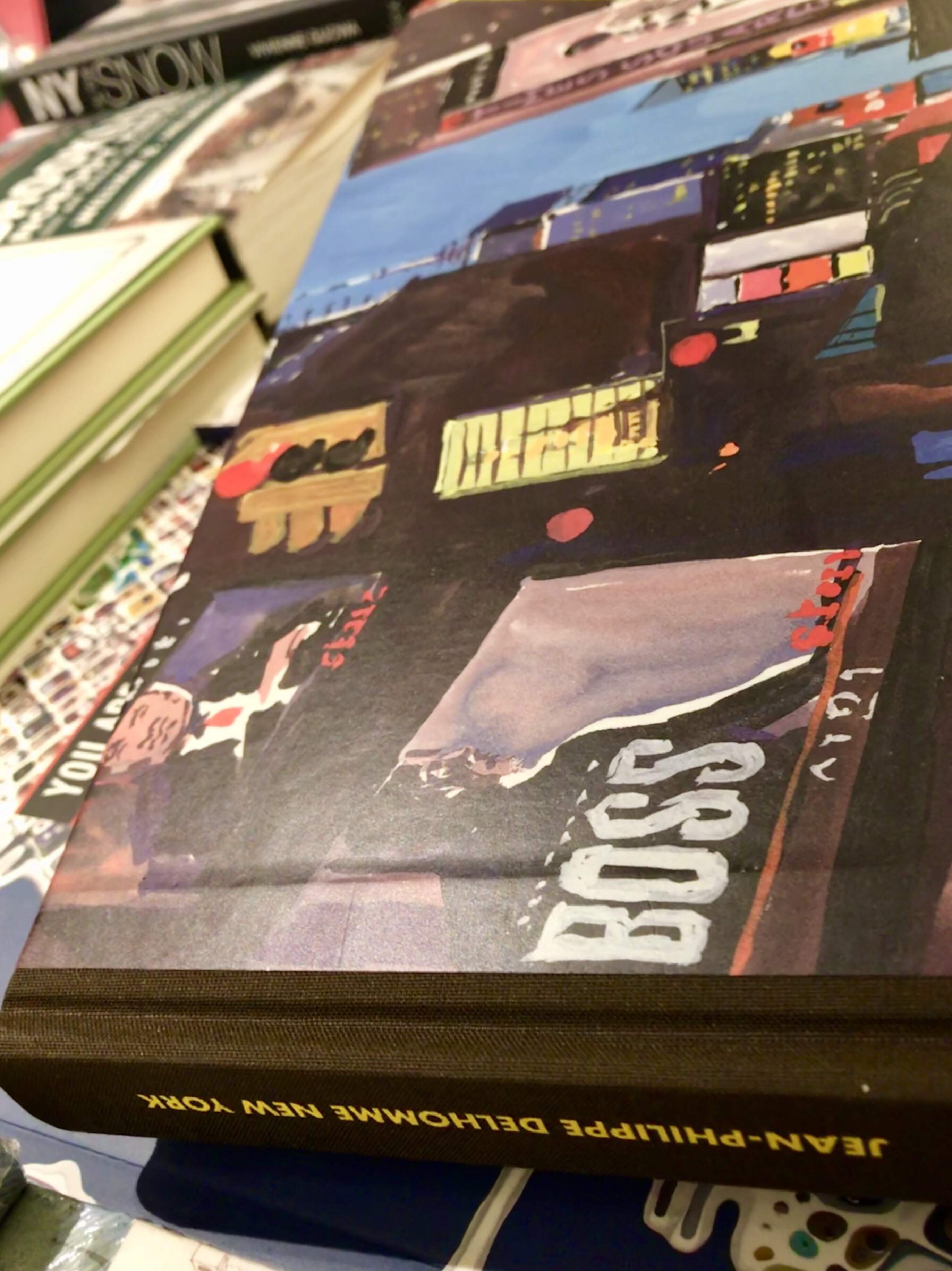
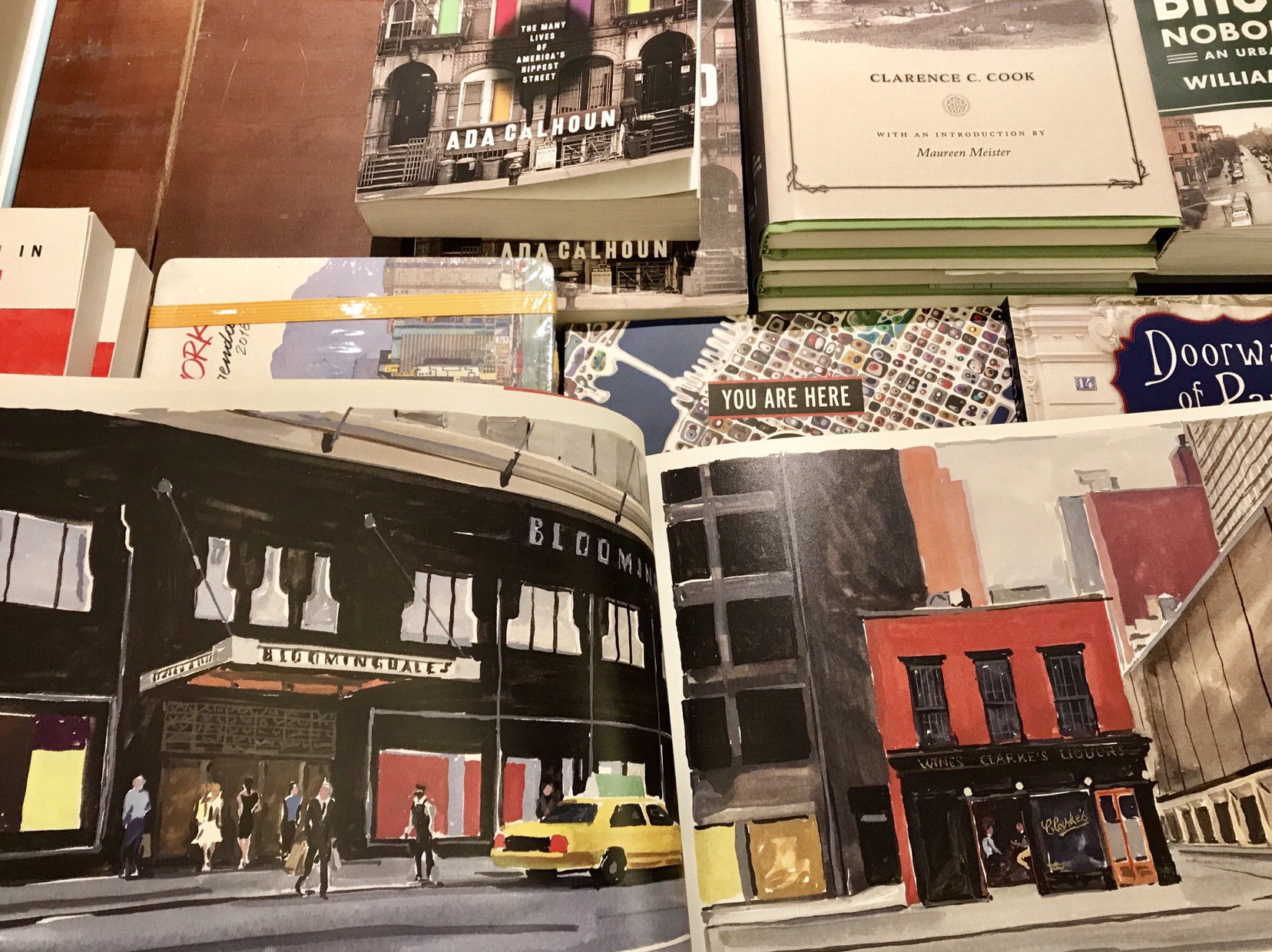
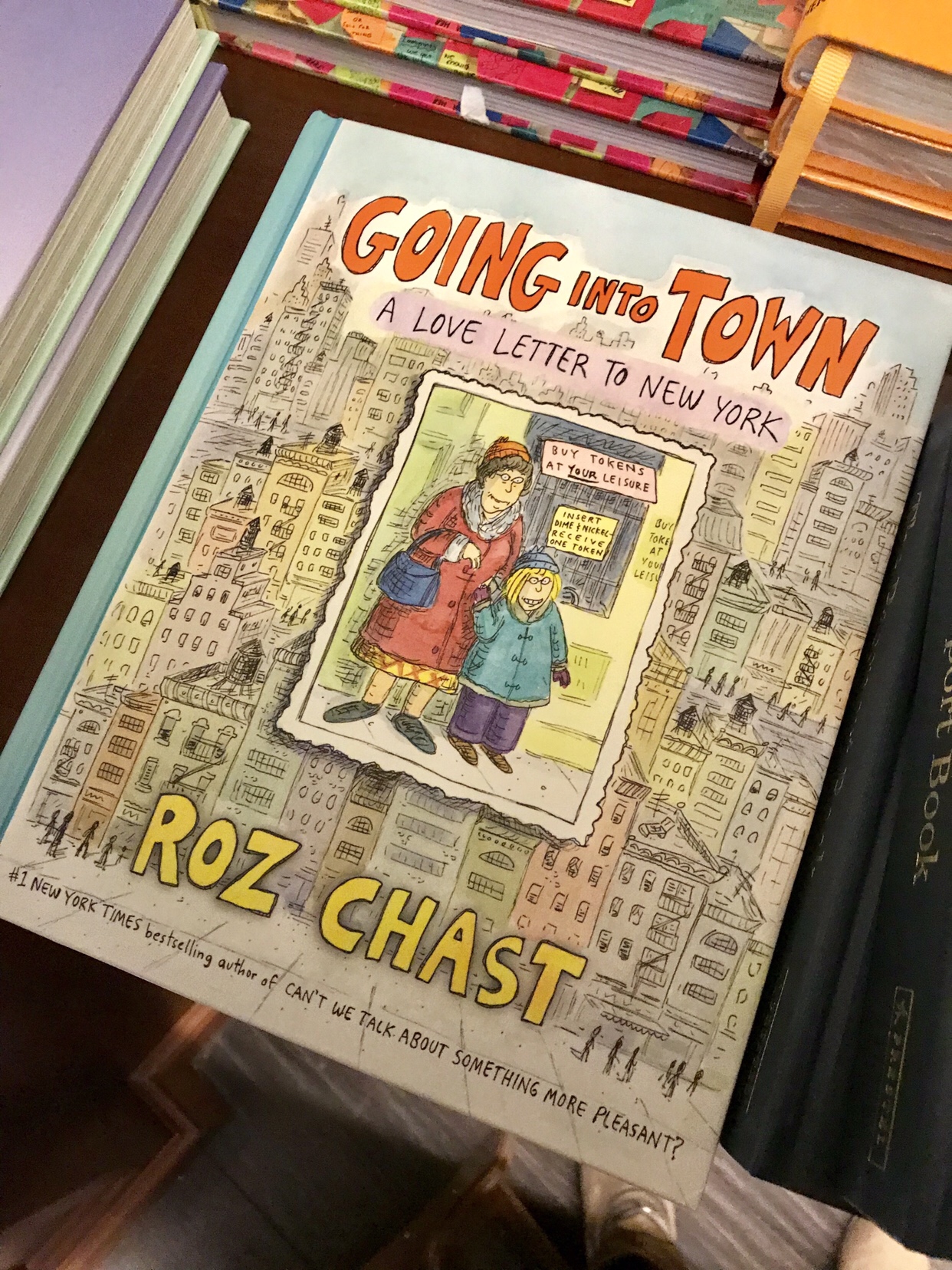
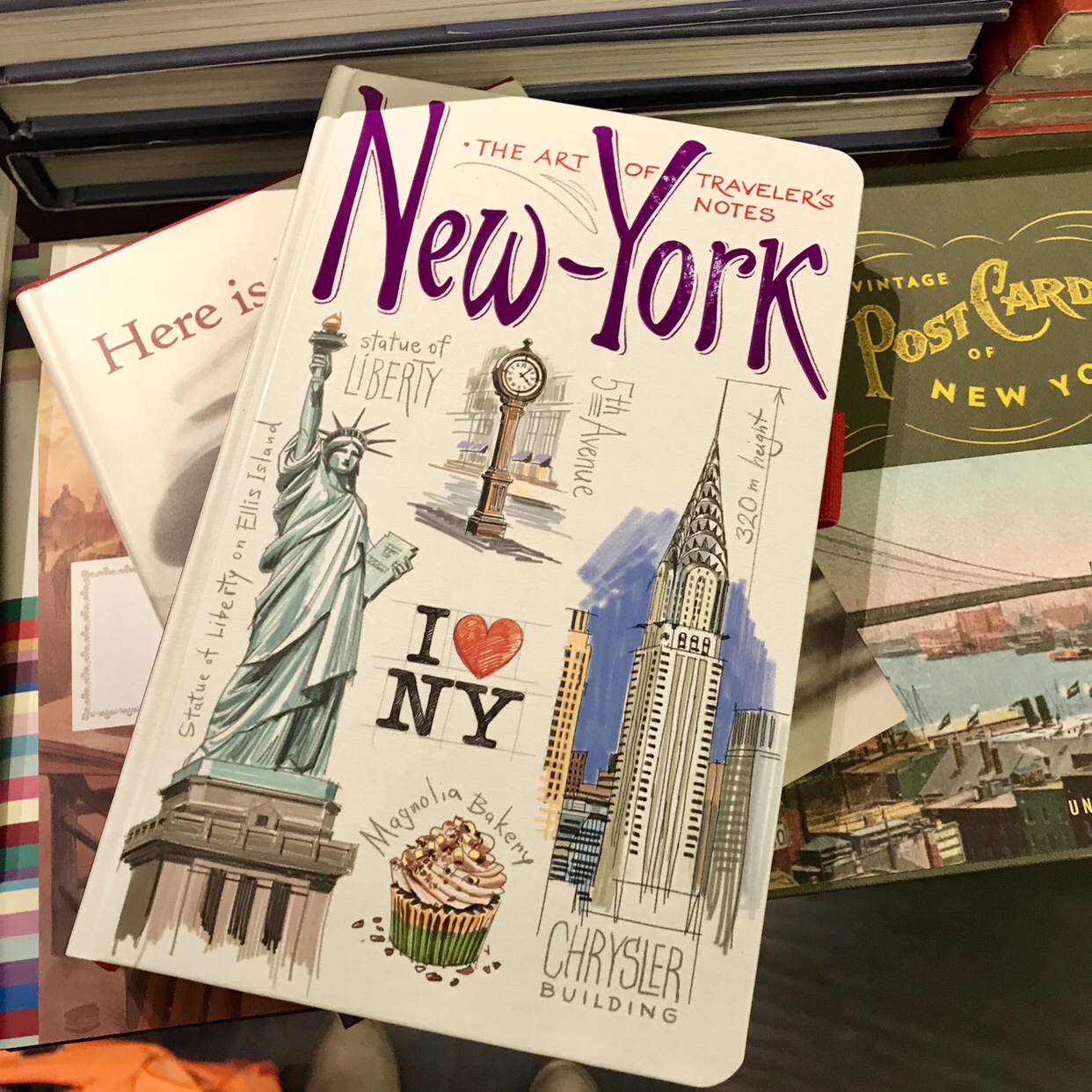
Other books looked as delicious as desserts in a literature bakery.
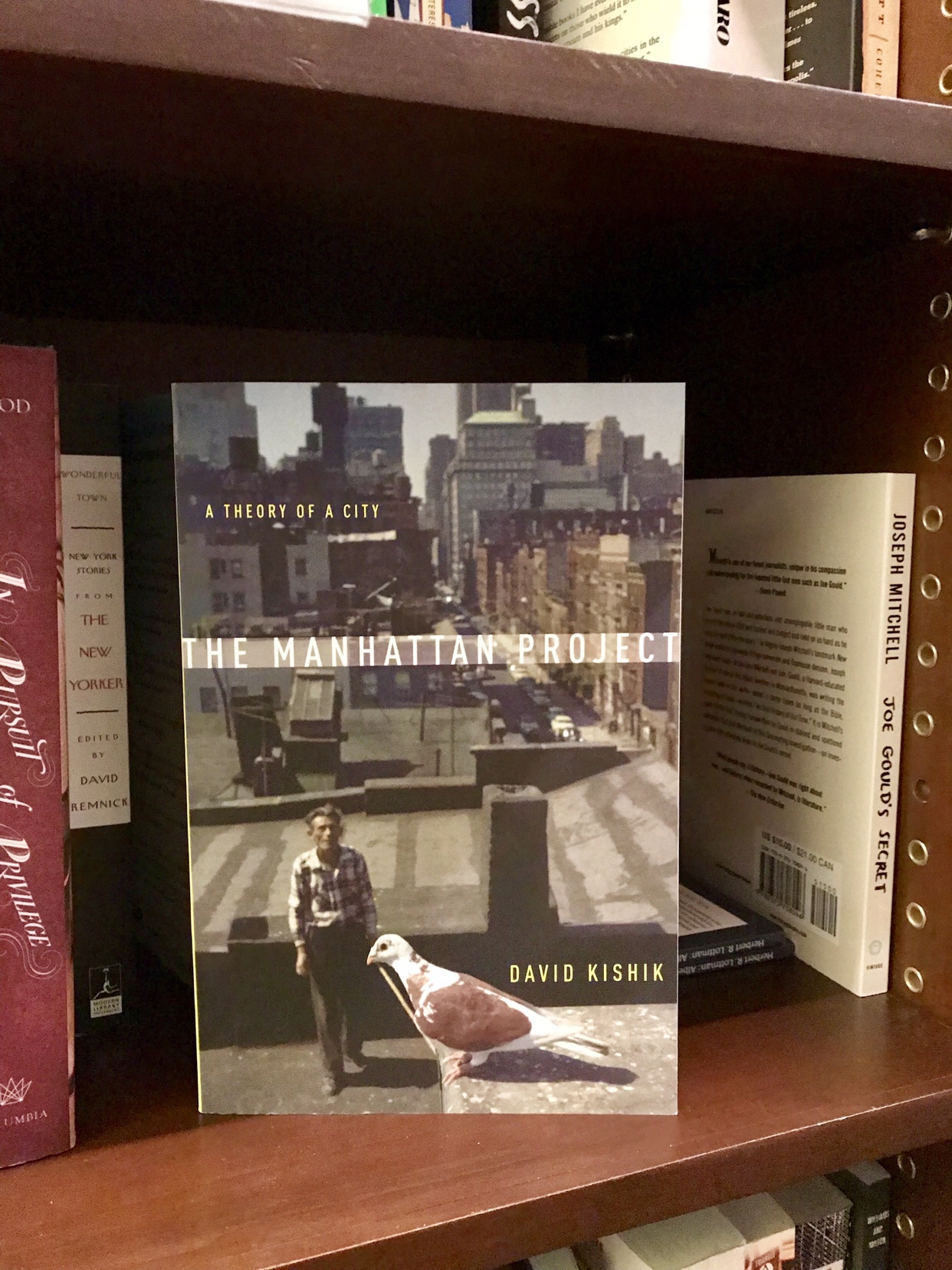
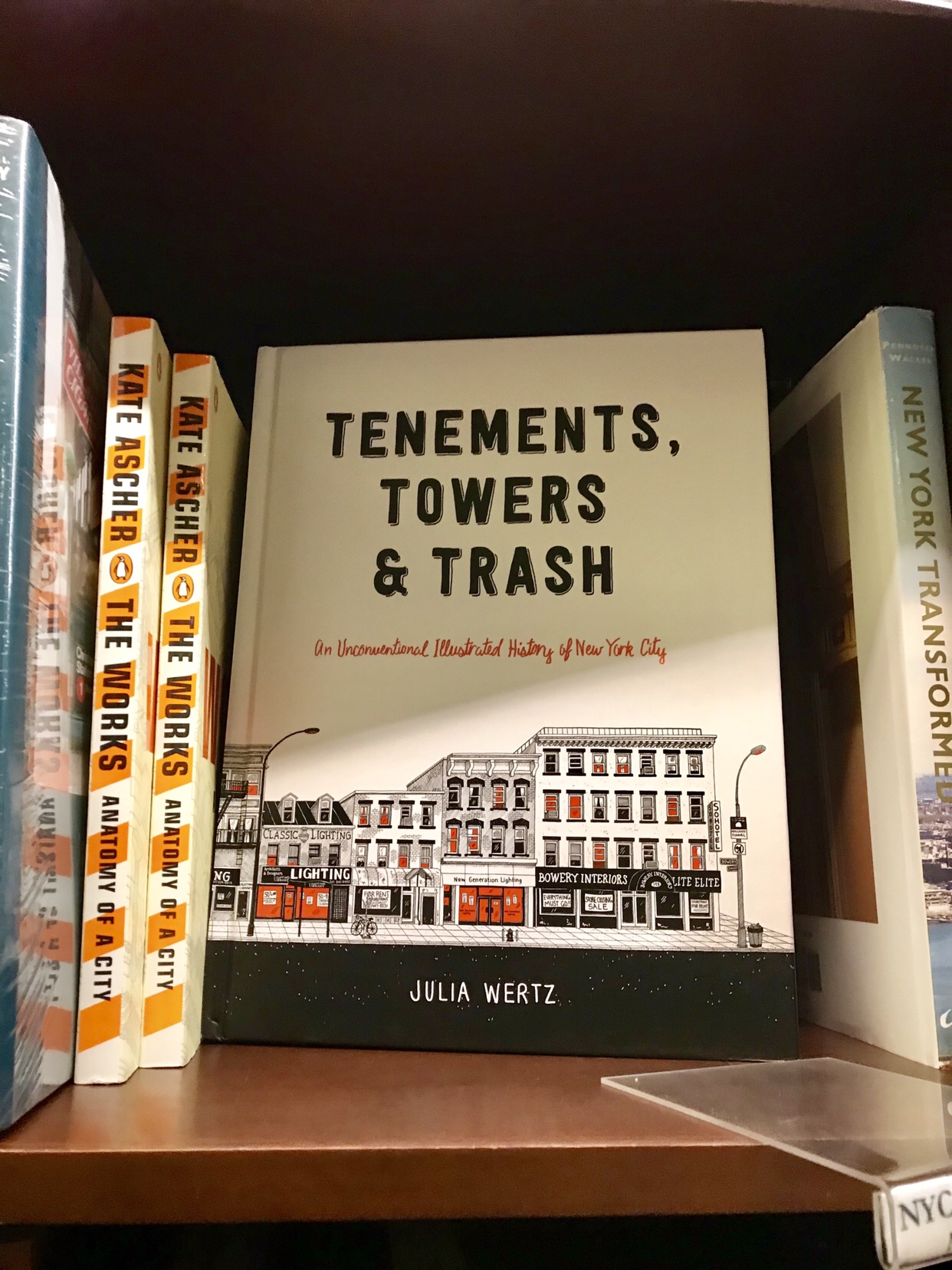
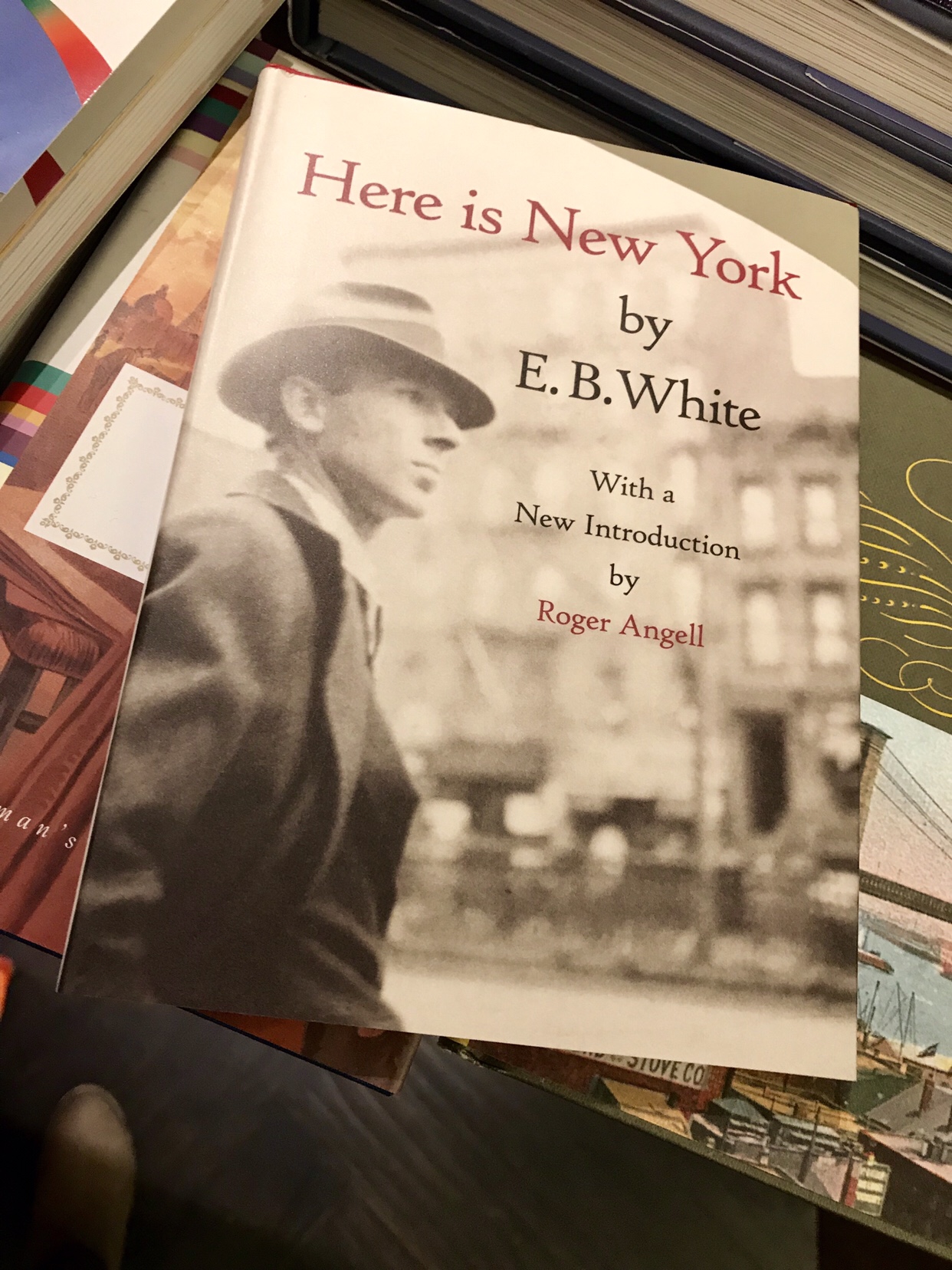
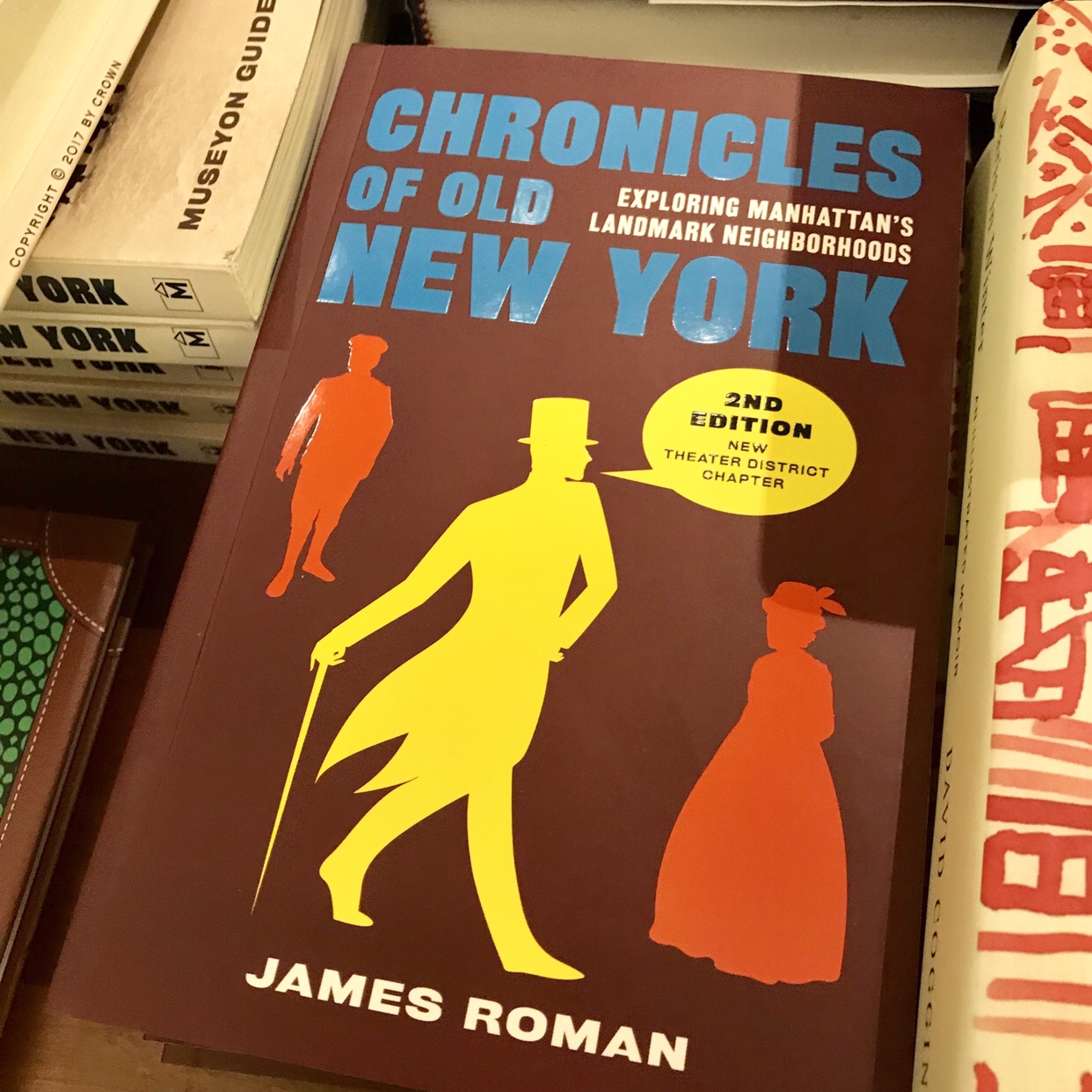
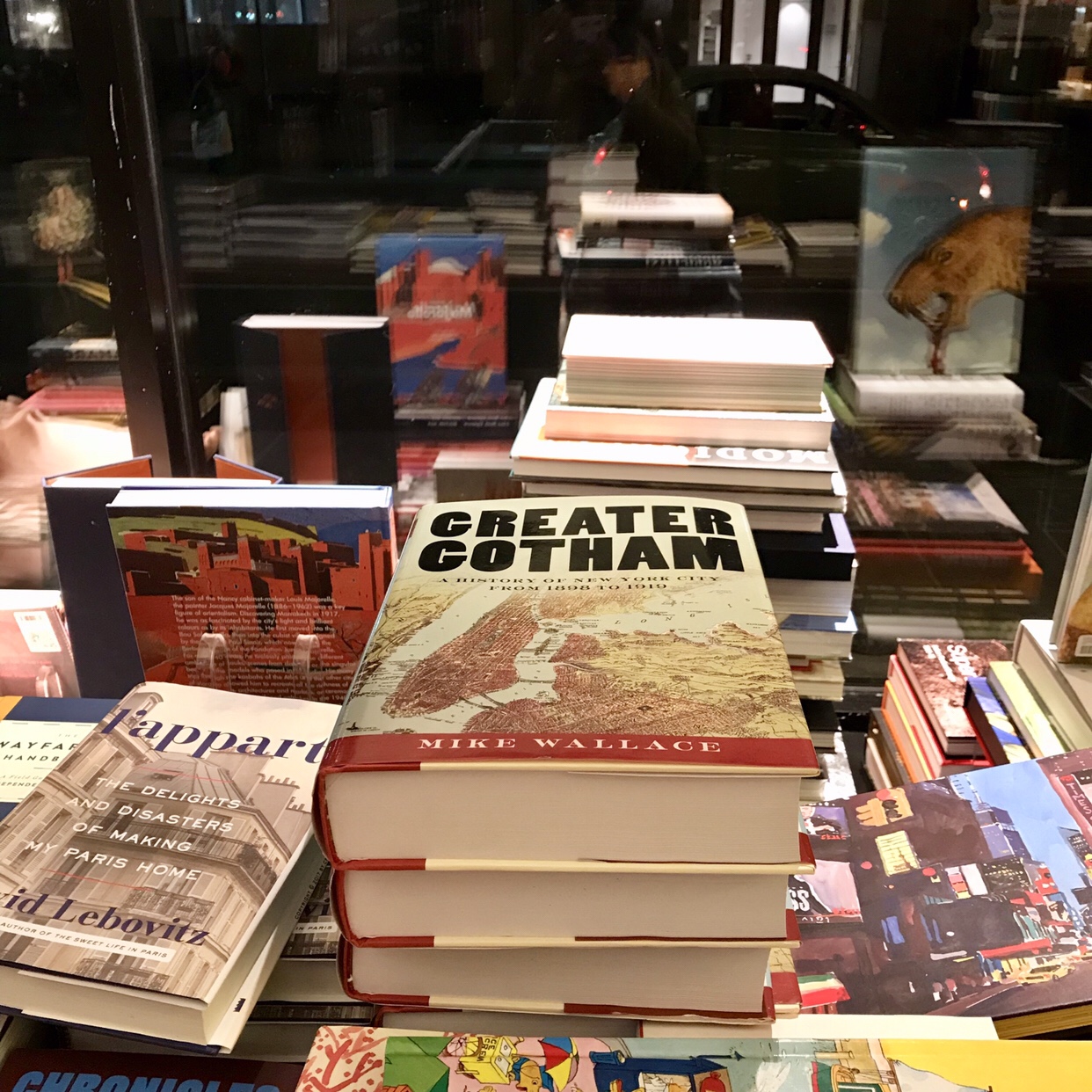
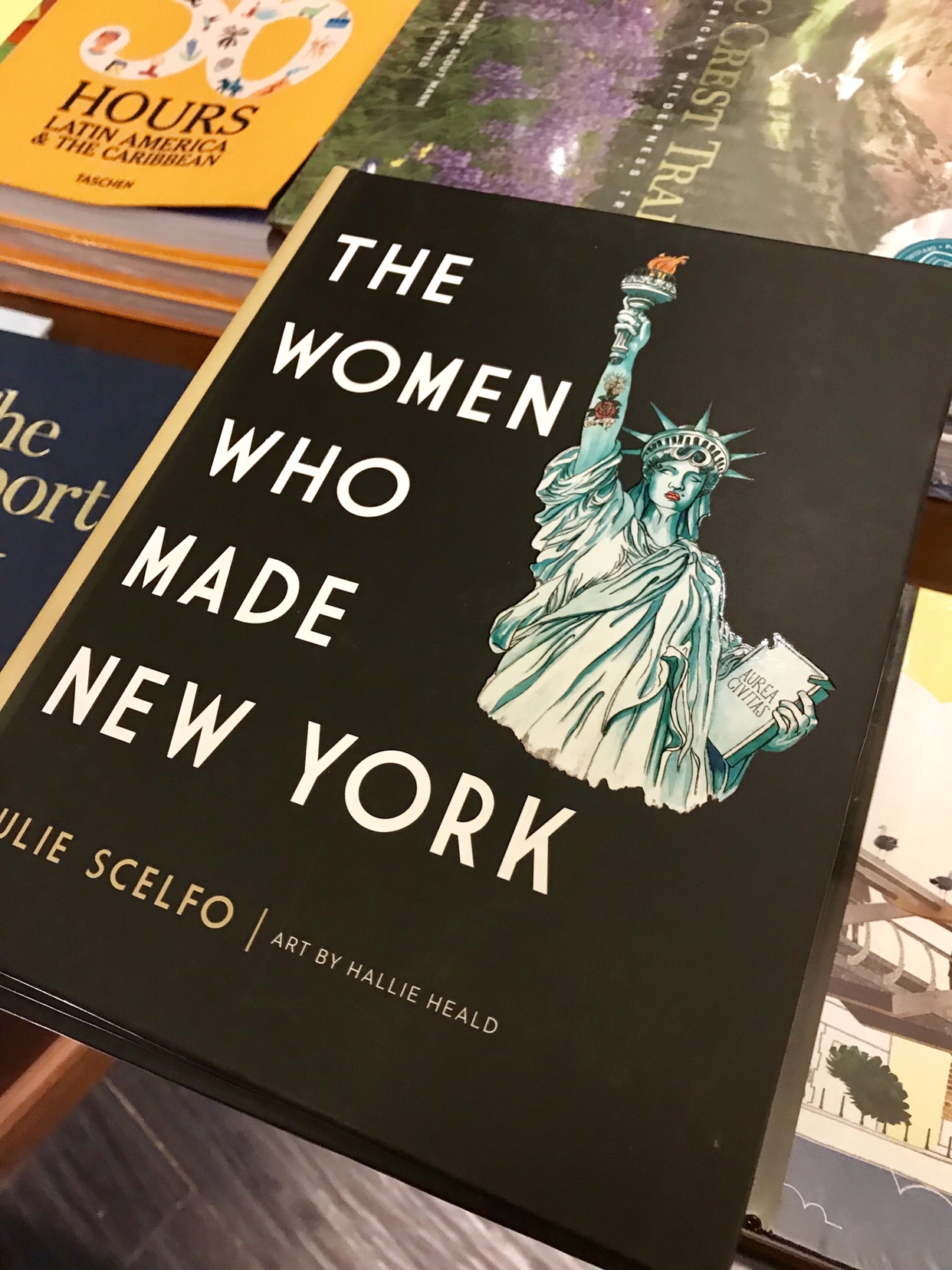
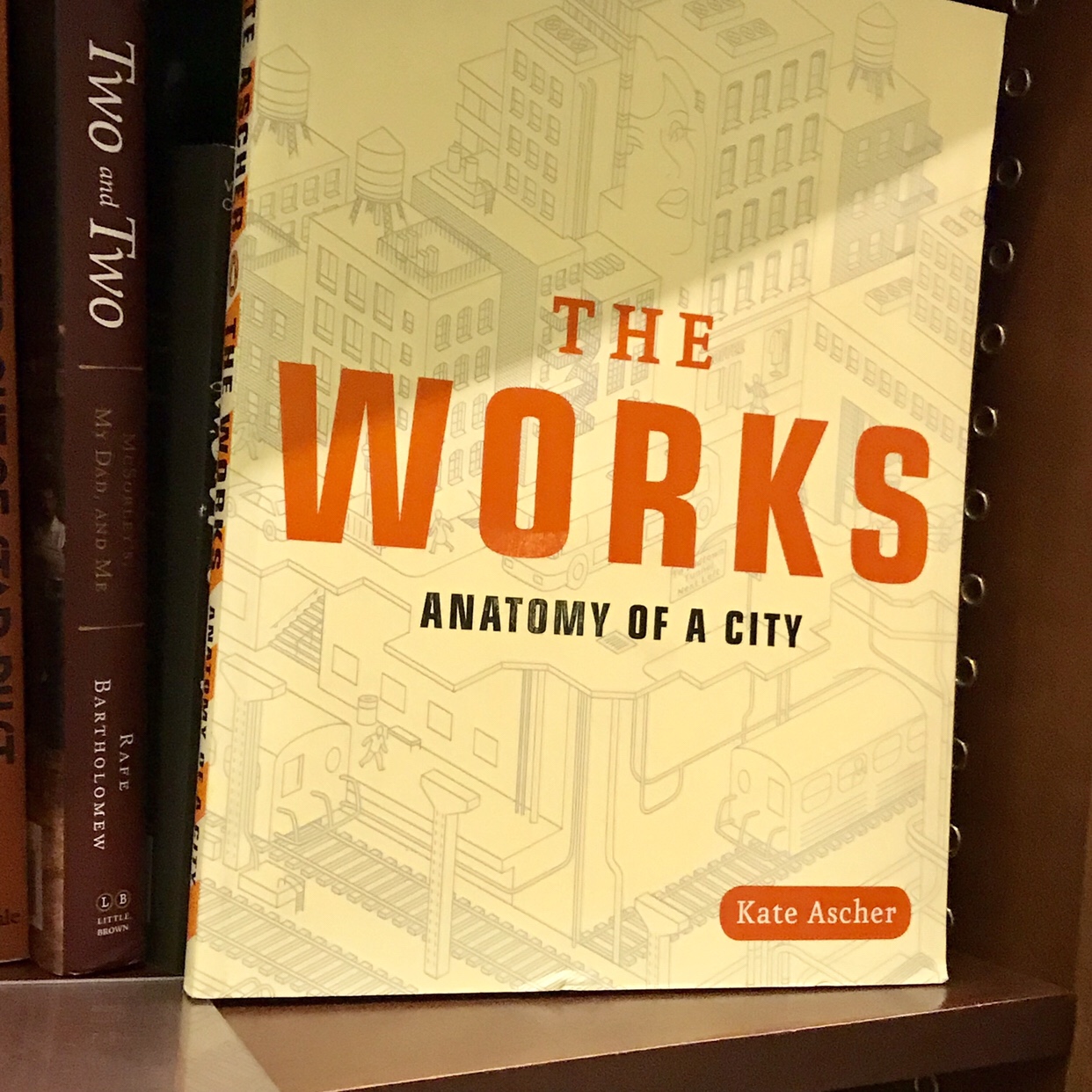
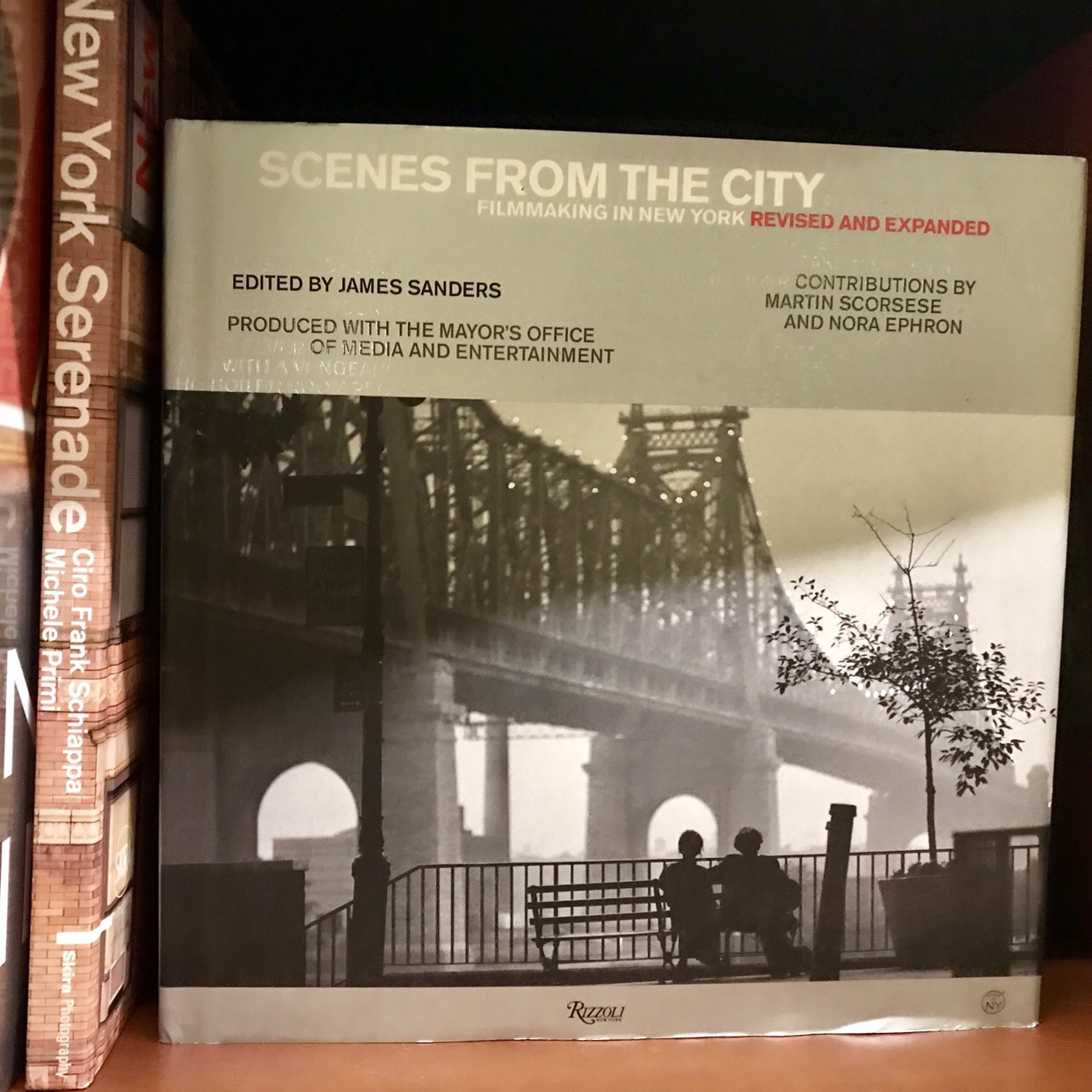
That’s what a book is, a single serving of story and ideas you can carry with you and devote yourself to, like listening with intention to one speaker. Attention is, after all, the best form of generosity.
Sometimes the tabs of my internet browser become a cacophony. Sure all of the books of Rizzoli, William Stout and Hennessey + Ingalls too, could be contained in a thumb drive. But what those people that consider bookstores obsolete don’t understand that bookstores are not just purveyor of books: they curate selection, there is a mind at work.. one that reads and knows about books. Perusing books on Amazon versus holding these portable maps in our hands is the difference between buying produce at a Walmart superstore or handpicking heirloom tomatoes in a farmers’ market. Bookstore owners are the farmers of knowledge. Once bookstores are gone from a city, soon will civitas and intellectual discourse [see San Diego. the only one of the major 6 cities in US without a bookstore… panem ( or rather vinum) et circensis is what fuels downtown.. when it should be the arts and local businesses.]Books like these in your satchel could make the difference between being a tourist or being a pilgrim, and inspire to sketch the city playfully.
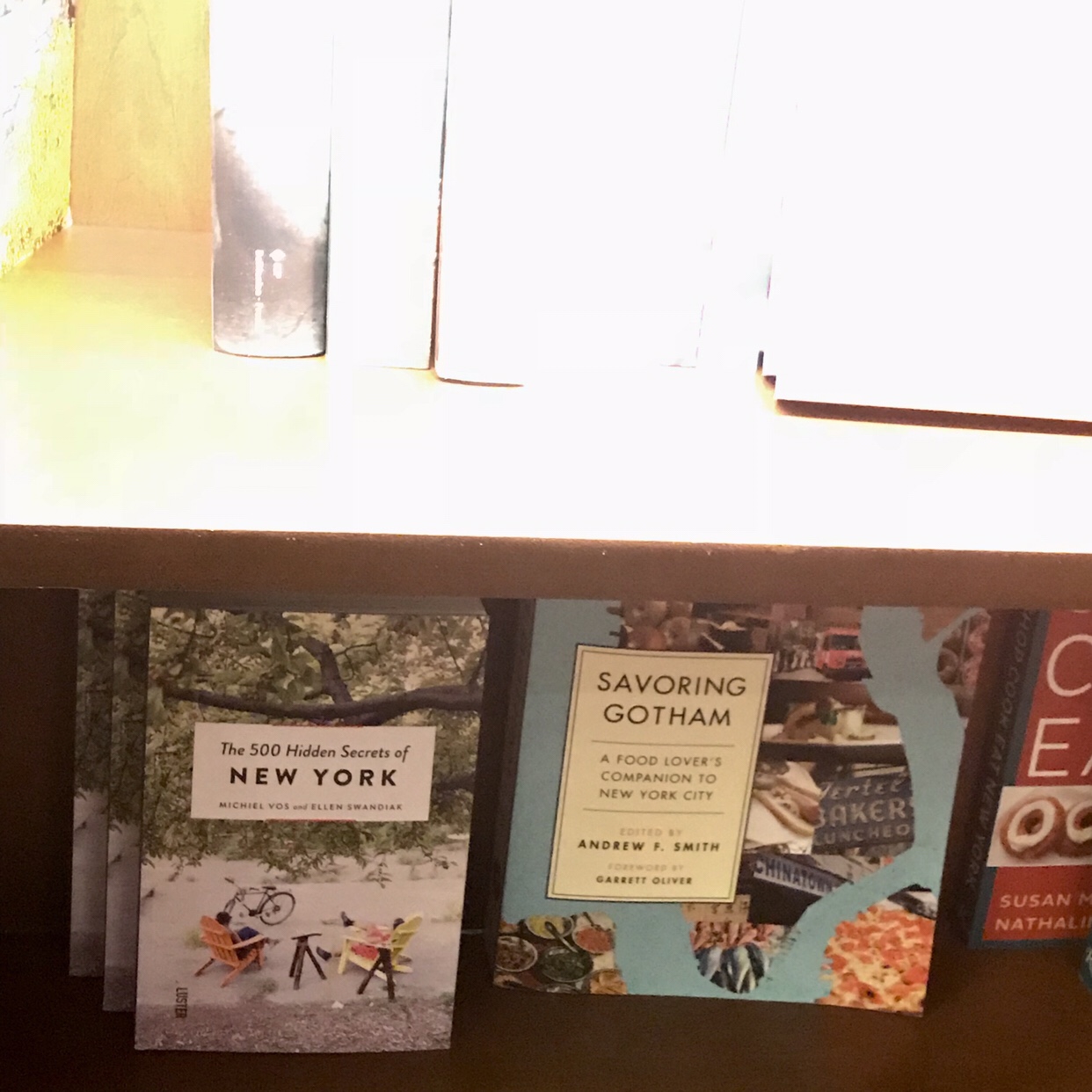
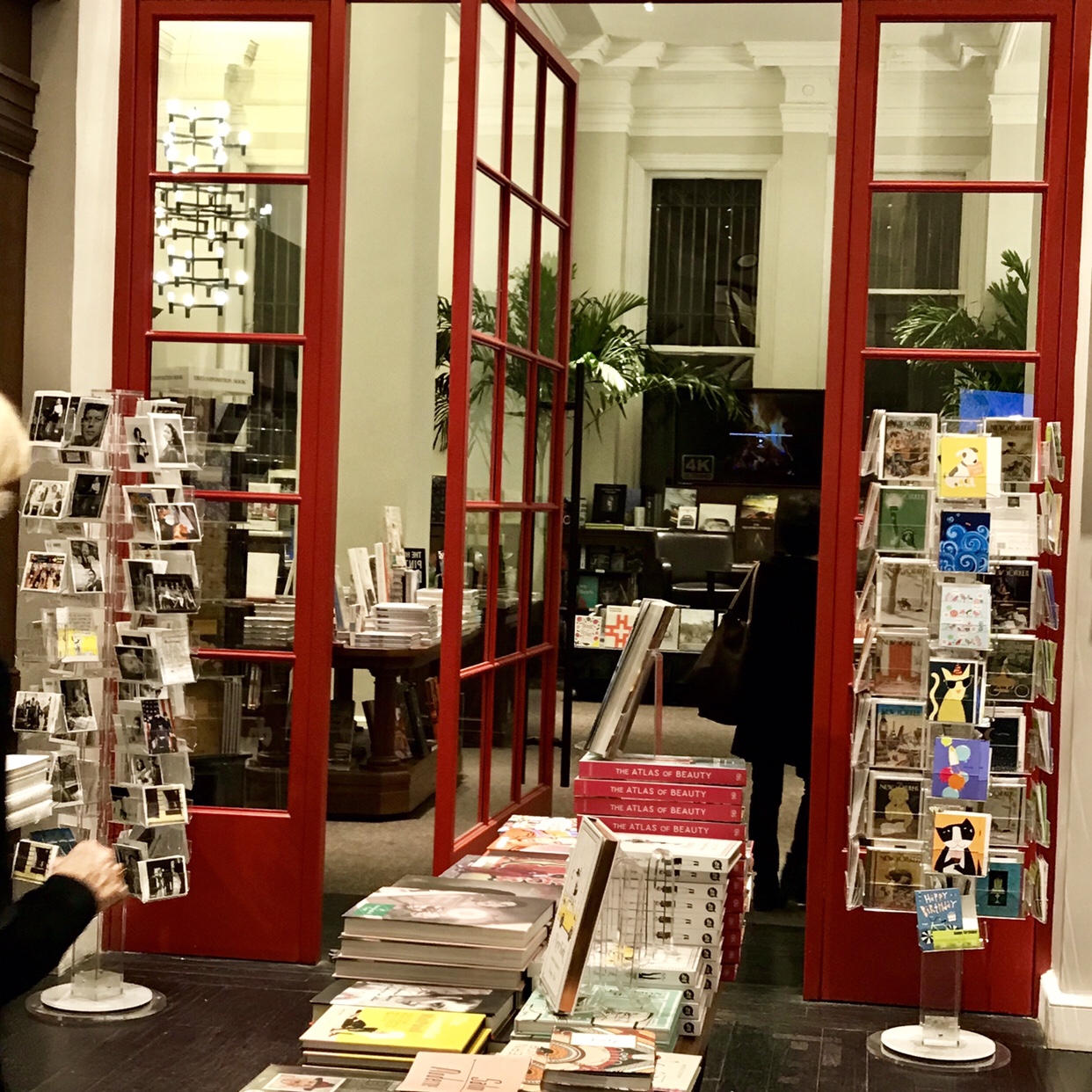
Posted in art,poetry,writing, Coffee, Ink, Quotes, sketching, The Situationist Internationale, tagged cafe chloe, cafe', journal, san diego, sketching on December 5, 2017| 3 Comments »
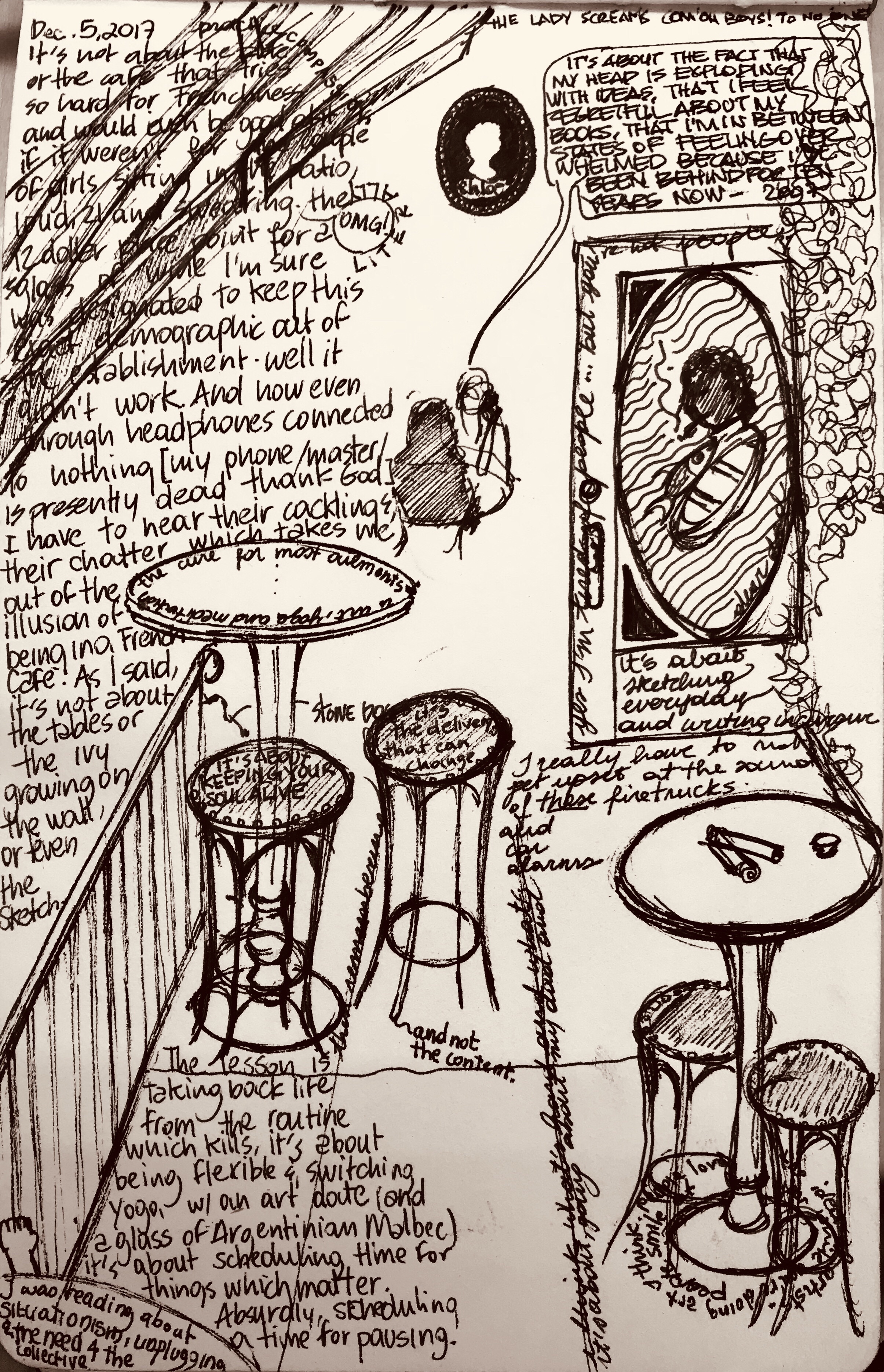
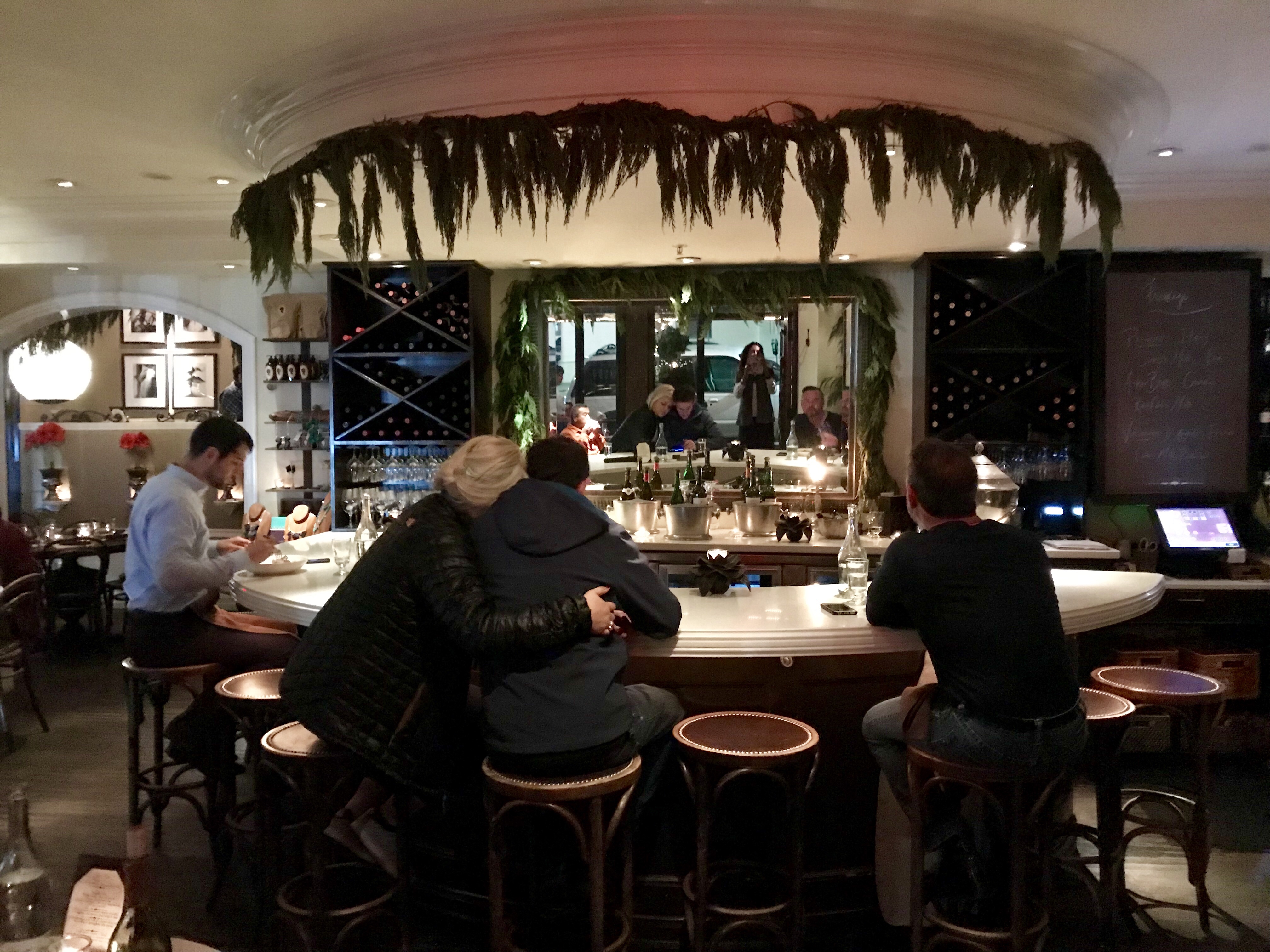
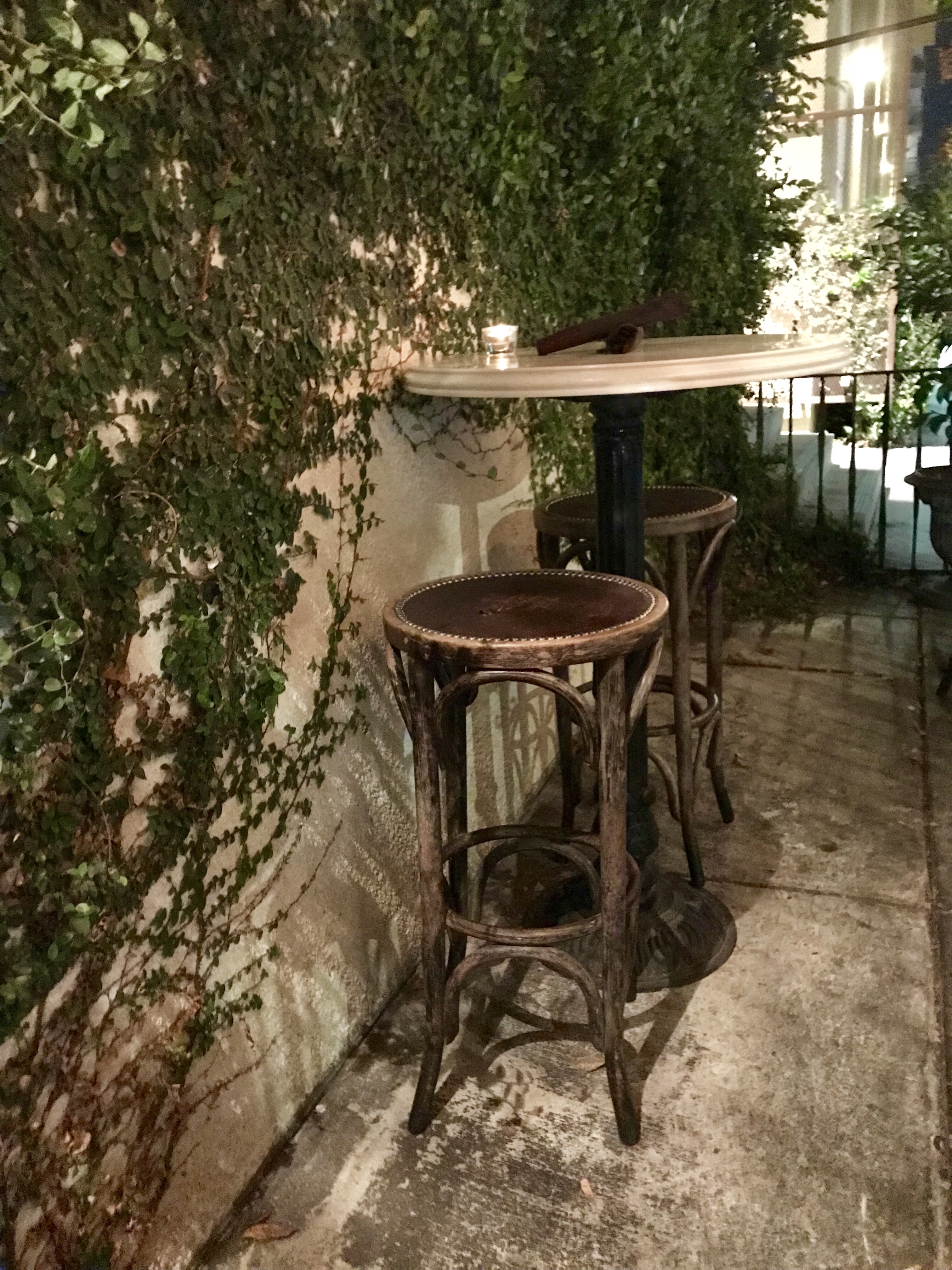
One has to start somewhere…
After finishing my sketch I ran into two dear friends who had come to the cafe.
Perhaps the cafés can be the new piazzettas somehow.
Here’s to spontaneous gathering and holiday cheers.
Posted in art,poetry,writing, Poetry, sketching, tagged eyes, poet, sketch on February 23, 2017| 2 Comments »

Stealing 1.5 minutes from Chronos to roughly sketch out surroundings. Academia has claimed the time reserved for Art, yet Art shall overcome. Cafe Bassam. January 2017
Let me try to explain the way
the poet sees.
To the poet the sparks of electricity
zapping along the trolley cables
are falling stars
A thread on the blue carpet
curls in the shape
of butterfly wings
The poet writes on the bus
and carves
tiny offerings to the Muse
out of dense, secular days
The poet sees a sky of pink
when she looks at the facade
under fluorescent street lights
(that’s when they started killing nuances)
The poet is always, always somewhen else
For example, when she closes her eyes she is in a city of spires and
horizonless turquoise
Here, wings tethered to a chronograph,
longing only for infinity,
and the only time that matters,
art
In her chest the poet keeps:
incense and ink
the space between words
certain nights
Her soul is already beyond the asphalt,
Through the pavement to become light
She understands exile now
and the words of those far
from the land of the two domes, from Beauty
As she walks through a city with no past a man tells her:
Let me guess. Size six.
Posted in art, art,poetry,writing, Artuesdays, Experiments, Graphite, Photography, San Diego, sketching, wanderlust, tagged heart, lotus, mandala, moon, sketch, sketchbook, solstice, strawberry moon on June 21, 2016| 5 Comments »
Northern Hemisphere,
June 19 and June 20, 2016.
Strawberry Moon and Solstice, an event that occurs every seventy years.
Full moon as the Sun stops to take Her in; the union of the masculine and the feminine. I hope you have been casting spells, and were looking skyward.
Posted in art, art,poetry,writing, Books, Coffee, Collage, digital collage, photography, writing, architecture, Digital Manipulation, Experiments, Ink, Mexico Lindo y Querido, Photography, Poetry, San Diego, sketching, Tijuana Diaries, tagged café bassam, cafe lulu, cafe', collages, poem to tijuana, Reading, rose, san diego, sketches on June 15, 2016| Leave a Comment »
A Mi Tijuana
Milton Ríos
Spanish | English
La olvidada, la 100 por ciento criticada!..
A la que puedes dar mil opiniones sobre ella
La única que es coherente con su equilibrio
Entre las cosas buenas y malas!
La ciudad malvada… la maravillada,
La llena de narcos!
Artistas, multicolores y muchos tantos…
Esta ciudad… ciudad de paso
Y paso a ser mía,
Mi ciudad! Mi metrópoli confundida
Ayer la mas violenta
Hoy el ejemplo de paz!
Pero solo en mi Tijuana se puede vivir esto!
Balazos, teatro… buena música, cineastas en acción
El party el revolución! La que ya no es nada
Por que nació la calle 6ta.
Donde se junta lo subterráneo,
Las culturas urbanas, donde no ahí negros ni blancos!
Ni mexicanos ni gringos…
lo que importa es la noche bohemia,
algo de baile y alcohol
que viva la diversión…
la ciudad de segunda!
De segundas oportunidades
Donde caen los deportados
Donde comen y duermen los emigrados,
Donde se respira libertad
Donde ahí policías buenos y malos!
Y aquí te preguntas? Para que ir al otro lado…
Si acaso nomas de compras,
a conocer lo bien planeado.
Pero para dormir a gusto! Para respirar a diario…
Con la adrenalina constante,
De Tijuana ahí que ser amante.
Y así a donde vallas al decir soy de Tijuana
Obtendrás ese silencio! Que es un silencio ganado
De respeto por que para criticar Tijuana
Solo nosotros los que la vivimos
Los que la hemos hecho nuestra
Y ser tijuanense, claro que satisface
Pero también pesa y cuesta!…
Posted in Architectural Photography, Architecture, art, Art Gallery, art,poetry,writing, Artuesdays, Digital Collage, digital collage, photography, writing, architecture, Digital Manipulation, Drawing, Mexico Lindo y Querido, photography, School Work, sketching, Traveling, Watercolor on April 27, 2016| Leave a Comment »
Posted in Architecture, art,poetry,writing, Artuesdays, Berkeley Diaries, Books, Collage, Design, Digital Collage, digital collage, photography, writing, architecture, Essay, Graphic Design, Graphite, Ink, Jewelry, Jewelry and Accessory Design, Le flâneur, Lectures, Photography, Portfolio of Work, Research, San Diego, School Work, sketching, Traveling, Urban Design, Writing, tagged Abstract, architecture academic research, documentation, Faculty Board, faculty portfolio, narrative, Pedagogy, publishing, storage cities, teaching on March 23, 2016| Leave a Comment »
Hello Stranger!
In case you are wondering what happened to me and why I’ve gone M.I.A during the month of February and most of March, the board above is one of the reasons. As it happened in 2010,
our school underwent an enormous accreditation visit, which meant preparing for months collecting, documenting and providing evidences.
One of the best things to come out of the work leading to the Accreditation was that Faculty was once more asked to prepare a record of what we have been doing – outside of teaching- the past five years.
It is a monumental task to audit, select and curate five years of life, work, art – yet I welcome the chance to take stock of where I have been, for it points to where I want to go. This process of self-evaluation is a privilege not afforded to many professions, and I was thankful for the challenge.
We were also asked to write a brief narrative. I worked on this more hours than I care to admit and I am happy to now share this with you: words, drawings and travel photography — some of which hasn’t been seen here yet! Hope you enjoy it.
“The French writer Daniel Pennac describes the notion of the passeur, of the ‘transmitter’, as intimately connected to the ownership of culture. He considers pedagogy as a branch of dramaturgy: a great teacher is a playwright, a vector of knowledge who instills curiosity, personifies her subject, and communicates passion. As an academic, designer, artist, and poet , storytelling is central to my work.
When I was six years old, fascinated by a book of folktales of Northern Europe, I decided I wanted to be a collector of legends. Though my path took me to Architecture and Fine Arts, teaching History of Architecture brought me to travel to Latin America, the American Southwest and the Caribbeans where I began to record the history of place through the stories of its native people, These ‘stories of architecture’ become the framework of my courses. Through drawing, urban sketching, collages, photography, and writing, my preoccupation has been with collecting, documenting, processing and communicating narratives – while letting the spontaneous unfold.”
Miti Aiello, San Diego, March 2016
Writer Update:
My abstract on my research on Storage Cities has been accepted by one of the two main Architecture academic bodies here in the U.S for presentation at their International Conference! They are sending me to Santiago, Chile in June, and will publish my academic paper. Too excited for words. If you want to get a sneak peek and read my abstract check out my academia.edu page.
This is likely a hello/byefornow.
I wanted to update my blog now that classes have ended for the quarter, and before once again leaving for Mexico, this time in Baja California Sur for a week of volunteering. Faculty and students of my school are going to help build a healing center using natural architecture in a location that is three hours away by car from the closest road. It will be very remote, challenging and, I am sure, transforming. I will document everything.
Few weeks ago I wrote that, sometimes, we don’t have time to do art because we are too busy living a life that is art itself.
That is a true blessing, amidst the inherent challenges.
Although I have not posted here, I have not stopped taking photographs, seeing, collecting, thinking. My hope of hopes is to get caught up with my posts this summer…Promises we have heard before…
“You don’t need motivation.
What you need is discipline, young lady!”Joe
Posted in Architecture, art, Art Gallery, art,poetry,writing, Drawing, Graphite, San Diego, school, School Work, sketchbook, sketching, tagged architectural drawing, art at night, Balboa Park, Drawing, graphite, Museum of Man, san diego on January 18, 2016| 3 Comments »
You might remember this drawing from November.
I finally finished at the beginning of January, on a cold (for San Diego) night, sitting in front of this 100-yearY building, under a portico.
Balboa Park always takes me back home. This entire drawing was done plen air and took me few sessions over several months to complete.
It will be on its way to San José, Costa Rica soon.
This is a quick photo, but i have a piecemeal scanned version ( sheet too large for my scanner, and the wide format at work is not very kind to graphite).I will try to compose the image and sub for it soon – but it has already been a whole week since this post languished in the draft purgatory and i want to get to my next night photography post.
Clouds make nocturnal old San Diego heartbreakingly beautiful.
By the way, i hope you all had a fantastic Holiday Break.
I just got back from another trip to México, and i have Mayan pyramids,cenotes, colonial towns and caribbean waters to share. I cannot believe i haven’t had the chance to share my two trips to Ciudad de México D.F from last July and November (¡Frida!) ..yet.
So next there will be a series of posts on México “lindo y querido”.
Posted in art, Art Gallery, Cures for the Nothing, Digital Collage, Ink, Life Drawing, Pastel, Poetry, Quotes, San Diego, sketchbook, sketching, Watercolor, Writing, tagged artists, Drawing, Life Drawing, Mondays in Balboa Park, nude modeling, painting, san diego, San Diego Art Institute, Watercolor on June 19, 2015| Leave a Comment »

First experiment in Digital nude painting on my Android HTC ONE phone, using the Paint Commander App and the Sensu brush.
Two months to the day of my last post, I return.
Like a lover who walks into the door surreptitiously, I offer no explanations.
Just Kidding.
This quarter saw me teaching three courses with a total of 120 students, so, dear Single Reader, the reason for my hiatus is self-evident. It was a ten-week long journey into different periods of History of Architecture and Urban Design, Urban Issues and so. much. more.
Here are snapshots of my bimonthly art dates. I have quite a few drawings, but could not conjure up the time and mental space to scan and post them. Ideally, these will be scanned version soon..but here they are.
I embarked on an Arabic adventure as of Monday, and this will be a spectacular summer, I feel and know.
“If we had no winter, the spring would not be so pleasant: if we did not sometimes taste of adversity, prosperity would not be so welcome.”
Anne Bradstreet
Posted in art, art,poetry,writing, Drawing, Experiments, Research, San Diego, sketching, tagged animal instinct, art, costume, Dr.Sketchy Anti-Art School San Diego, Drawing, Friends, fun, getting my hands dirty again, graphite, Life Drawing, Markers, model, Sitting on the floor on March 23, 2015| Leave a Comment »
On Saturday, I participated to Dr. Sketchy San Diego, a fun artistic encounter involving life drawing.
This month’s event was centered around ‘Animal Instinct’ :).
We had a very fun model.
I realized I need these ‘art dates’ to keep me engaged with making art as I find my way back… back to my art studio.
Also, I may just, finally, have found my tribe.
Posted in art,poetry,writing, Paper Goods, Poetry, Poetry, sketching, wanderlust, Writing, tagged Drawing, or something like it, Poetry, Protestations, Puerto Rico, sketch on September 17, 2014| Leave a Comment »
Posted in digital collage, photography, writing, architecture, Drawing, Ink, Poetry, sketchbook, sketching, tagged coffee shop, Drawing, light, light fixtures, lounge, luminaires, Noelle Kocot, on being an artist, poem-a-day, red, sketch, sketch every day on May 19, 2014| Leave a Comment »
|
Posted in art,poetry,writing, Competitions and Collaborations, Drawing, Ink, Painting, San Francisco Diaries, sketchbook, sketching, Traveling, wanderlust, Watercolor, tagged Drawing, sketchbook, Watercolor on April 10, 2014| Leave a Comment »
Posted in architecture, art, art,poetry,writing, Coffee, Collage, Drawing, Ink, sketchbook, sketching, Spontaneous Constructs, Thinking with my hands, Watercolor, tagged Buffalo, cafe', coffee watercolor, collage, Ny, painting with espresso coffee, sketchbook, SOciety of Architectural Historians COnference on April 19, 2013| Leave a Comment »
Posted in art, Drawing, History of Architecture, Poetry, sketchbook, sketching, Writing, tagged Drawing, Egypt, ink, Nefertiti, Paris time, sphinx on November 30, 2012| Leave a Comment »
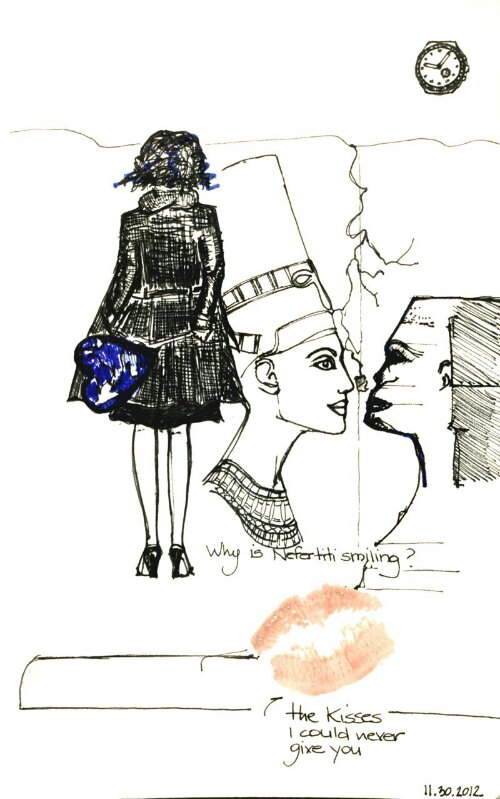
Ink and lipgloss on hand. book paper. November 2012.
Posted in art, Art Show, Drawing, Painting, sketching, tagged art studio, charcoal outiline, cover, horizontal canvas, painting, pastel drawing, princeton architectural press ctalog, sketch on August 27, 2012| Leave a Comment »



On my way to Roma but wanted to share my latest project.These are the prep sketches and the charcoal outline on the final canvas, which measures 5.5’X2.5′.
This painting was commissioned and I am lucky to have a very lovely client : )
The last photo is from the Princeton Architectural Press catalog, which just came in my office.
I would love my studio to be like that one day…
Ciao!
Posted in Architecture, art, Drawing, Film, Habana Diaries, History of Architecture, Ink, Music, Poetry, Quotes, sketchbook, sketching, Watercolor, Writing, tagged Before Sunrise, cuba, Drawing, Havana, History of Architecture, ink, La Habana, Moorish Architecture, Movie, Mudejar, Neoclassical Architecture, sketchbook, sketching on April 26, 2012| 2 Comments »

El Templete, Habana Vieja (with water from the Malecon).
Ink on hand.book paper. Habana, Cuba. April 2012.

Example of Moorish (Mudéjar) Architecture in Habana Vieja.
Ink on hand.book paper. Habana, Cuba. April 2012.
….
“Music is a total constant. That’s why we have such a strong visceral connection to it, you know? Because a song can take you back instantly to a moment, or a place, or even a person. No matter what else has changed in you or the world, that one song stays the same, just like that moment.”
Sarah Dessen, Just Listen
Posted in Architecture, art, Books, Drawing, Photography, Poetry, San Francisco Diaries, sketchbook, sketching, Traveling, Writing, tagged berkeley sign, Drawing, Photography, san francisco, sketches on February 19, 2012| 2 Comments »
Posted in art, Calabria Diaries, Drawing, F R A G M E N T S, Ink, Poetry, Quotes, sketching, Writing, tagged Dali, Drawing, fisherman, fragments, Lao Tzu. Wisdom, pescatore, poem, poems about a cashmere wrap, Quotes, Saul Bellow, visual poetry on December 15, 2011| Leave a Comment »
The cashmere wrap finally arrived in the mail
so much weighs on this stole
‘opportunity a thief makes’
he said before giving me homework
“A great deal of intelligence can be invested in ignorance when the need for illusion is deep”
A lot weighs on this stole:
conversation is rippled with diamonds
they tumble , heavy, they are words, quotes
…out of the mundane…
a pearl – grasp it and keep it.
Wisdom is the only jewelry I wear this season
and my greediness awaits
He who grasps more than he can hold, would be better without any.
If a house is crammed with treasures of gold and jade,
it will be impossible to guard them all.
Did you hear the sound of wisdom, Heart?
The message you sought.
My only wealth is my memory.
Like a mendicant I gather precious words,
fragments of light that I bring back,
puzzles I spend days composing.
– You, collector of spirit, feeder of souls.
Everyone wants to go to Heaven, no-one wants to die.
The falcon, scarred wing, alighted the sill.
– the magpies, once they have caught the prey,
lose interest
and look around for the next creature to pursue-
grasp their message
Catch leaves in the wind
Heaven is simple:
Posted in Architecture, architecture, art, Art Gallery, art,poetry,writing, Artuesdays, Berkeley Diaries, Books, Coffee, Collage, digital collage, photography, writing, architecture, Featured Artists, Poetry, school, School Work, sketching, Writing, writing, tagged art, charles simonds, clay dwellings, corcovado nights, designers, dwellings for imaginary civilizations of little people, graphite drawing, new york, NYC, Poetry, poets & philosophers, sarah vaughn, wabi-sabi for artists, whitney museum on August 28, 2011| 2 Comments »

Various Graphite Media, depicting 'Dwelling for Imaginary Civilization of Little People,1998' by Charles Simonds. Made in clay, adobe, paint and housed in the New Mexico Museum of Art. August 2011.
Wabi-sabi is a beauty of things imperfect, impermanent, and incomplete.
It is a beauty of things modest and humble.
It is a beauty of things unconventional.
His microscopic urban interventions at one point could be found, among others, in Paris, Venice, Shangai, Dublin.
They are now housed as prestigious artifacts in art collectors’ homes and museums (like the Whitney in NYC).
Click for more Charles Simonds’ dwellings
Watch the video: Dwellings 1972
. . . . . . .
Salmon kisses,
I knead essays at night
dream perfect poems–
lost silver strands become your hair.
I make collages of languid bathroom quotes,
Night drunk with words,
your eyes are full of them–
nestled in the cup of your arms
like Simonds’ tiny city in a new york warehouse.
A word thief,
of raspberry essence–
the poetry of portugal:
“Your toes are
little ducks
Sita to Shiva…”
You say I’m used to you like my mandatory doppio cappuccino,
Sarah’s velvet voice,
You say my poems always have three words:
almonds, apricot, oil.
Here you go:
Downtown is on fire
Your almond eyes float like moons
Your skin is oil on water,
Berkeley, August 2011
Posted in art, art,poetry,writing, Berkeley Diaries, Books, Coffee, Drawing, Ink, San Francisco Diaries, sketchbook, sketching on April 2, 2011| Leave a Comment »
Posted in Architecture, art, Artuesdays, Books, Cures for the Nothing, Digital Collage, Drawing, Essay, History of Architecture, Ink, Photography, Poetry, Quotes, Research, school, School Work, sketching, Theory and Criticism, Writing, tagged 'spiro kostof, ability to visualize, architect: chapters in the history of the profession, architects, architecture academia, architecture curriculum, artist, balboa park san diego, communication for architects, criticism, curricula, designers, downcast eyes: the denigration of vision in twentieth-century french thought, draw it, Drawing, drawn, essay, eth switzerland, importance of literature, inchoate, ink, intellectual dialogue, literature, mandatory poetry, marc angelil, meditating, pen, Poetry, poetry humanities in architecture curriculum, powerpoint, read in the park, read outdoors, resolutions 2011, sketching, the picture is worth a thousands words syndrome, tyranny of the visual, visual people, visualization techniques, war, writing, writing for architects on March 9, 2011| Leave a Comment »
As designers, architects, artists, we use the ability to first visualize then communicate a desired outcome. Implementation means having the courage, discipline and perseverance to bring that vision into the physical realm. I love to write, and to write lists, but this year I am doing something different with my 2011 resolutions. I am drawing them. It sems to be working. On good days, and they are abundant here in San Diego, you can find me in the park, chasing the sun and reading. An old-school physical book. The previous specifications is now necessary due to the variety of reading options we have (what is your pleasure, or rather, your poison: smartphone, kindle, ipad, TMZ on your laptop?). These are my immediate, must-finish charges:
Books:
Inchoate: An Experiment in Architectural Education. Angelil, Marc and Liat Uziyel, eds.
The Architect: Chapters in the History of the Profession by Spiro Kostof
Sketching and meditating. Two resolutions, perhaps one and the same.
Pondering on drawing, as opposed to writing, resolutions led me to think about visual vs. written and oral communication.
While drawing-or diagramming-a goal may help provide us with clues, visual or other, that help us actualize it, I don’t buy the argument that ‘visual’ people can only best communicate their intent through images. This is also known as ‘a picture is worth a thousand words’ syndrome. By the same token, I refuse to accept that ‘visual’ people only understand material if it’s accompanied by images and therefore should be excused if they are poor readers or listeners. That is plain laziness. There are notions and topics in this world that cannot be boiled down to neat Powerpoints (even though, heaven knows, we have tried to even run wars through the ubiquitous slide application), but require flight of the imagination, suspension of disbelief, and the ability to follow (picture-less) complex arguments. In trying to explain critical thinking, images run the risk of appearing like obtrusive clip-arts, obfuscating rather than enlightening.
The tyranny of the visual often lets us get away with having inferior written and oral communication skills. I don’t buy the ‘visual’ doctrine (or fallacy) with my students or my architecture colleagues. Maybe it’s because I come from a linguistic lycaeum, was an English Minor, and come from Italy, but the way a person speaks or writes is more important to me, or revealing of their character, than any imagery or composition she or he can conjure up on a board. And here I need to say that, lest I behave like a whitened sepulcher, I know I have failings when trying to communicate: typos due to late night writing, listitis (I make too many lists), lectures that tend to go on a tangent and probably what is called mild A.D.D in this country (or severe A.D.D…depending on what day you ask my students;)). Lastly the fact that, no matter how many years I live here, my soul is Italian and so is the way to express myself, and we do use lot of what here are called ‘run-ons’ in writing, and perhaps even talking. We are peripatetic, scenic-route communicators.
Ok, so I am not perfect: let the flawed still admire and aim at beauty.
I ask the person I listen to to paint a convincing, even seductive picture with their words, to evoke the sense and meaning of their process. Of course exact,clear words go well with exact, clear drawings and diagrams, but seductive images without substantive explanations or clear, logical statements leave me dry. The literary arts are for the most part lost to modern architecture students, beyond the required ‘humanities’ and enticing (but seldom frequented) advanced elective courses. The result is professionals who are literate in CAD, codes, building, or even ‘architecture’, but illiterate in the sense of the global collective written word, and therefore culture. Shouldn’t the designers of shelters for the human race understand its most lyrical expressions? Shouldn’t they design for man and woman’s highest aspiration, rather than the lowest common denominator? We ask architects to create places of Beauty, places that inspire, to design poetic aedifices. Without knowing what poetry is, without at least having been exposed to it, that is an impossible feat. If architecture is the Mother of all the Arts, should it not contain them? Literature, philosophy, liberal arts, music…Where are you Muses in our curricula? We have modified –and are moving towards transforming–the academic requirements for the make-up of the future architect based on the needs (vocational at best ) of field practice, a large number made up by corporate building farms, where architecture is just a sign on the door. Of course we aim for graduates ready to enter the profession, but hopefully we are also aiming for critical thinkers, whole individuals who can inspire, not just perform. What should lead, follows. The trend can only go downward. I am talking about cad monkeys, or people who are paid ‘to draw, not think’ –I was actually told that many years ago. Call me irrational, but I call for mandatory poetry courses (mandatory poetry! an oximoron). Call me utopian, but world literature should be as much part of an architecture curriculum as world architecture. When you know, you cannot unknow. I always say that. When you are exposed to possibilities and ‘big questions’ you cannot accept passively that things are just the way they are because they have always been. Poetry and literature are democratic expressions, highly dangerous to the status quo. And therefore highly desirable.
In my quest, I ran into this book. I am collecting a body of critical readings (for myself!) and this book will definitely be included.
Downcast Eyes: The Denigration of Vision in 20th Century French Thought, by Martin Jay
Posted in Architecture, art, Books, Cures for the Nothing, Design, Digital Collage, Digital Manipulation, Drawing, Featured Architects, Lectures, Museum WOWs, Photography, Poetry, Quotes, San Diego, school, School Work, sketchbook, sketching, Theory and Criticism, Writing, tagged 2011, AIAS NSAD, Allen Ghaida, Autograph, BIG, bjarke ingels, california, danish architect, Drawing, february "%, Hybrid notes, lecture notes, museum of natural history, newschool, NewSchool Arts Foundation, newschool of architecture and design, notes from the lecture, NSAD, NSAF, Review, san diego, sketches, visual notes, yes is more on February 28, 2011| 2 Comments »
Bjarke Ingels came to speak to our school Friday night.
The venue was the Museum of Natural History in scenic Balboa Park.
I am still blown away by the lecture and, more importantly, the message.
It was truly (r)evolutionary. The fact that BIG’s insanely brilliant concepts not only get built but a) give back to the community in terms of urban interaction b) are socially and ecologically responsible and c) are giving him fame and making him a household name is galvanizing.
Expanding the collective idea of what is possible through architecture: this is the optimism we need after years of gloom, in face of all the naysayers and ‘pie-in-the-sky’ disablers. Something is blooming in the state of Denmark.
What an event. My friend Alan Rosenblum told me it would be as if ‘Lady Gaga came to San Diego’.
And. It. Was. The students loved it. Three days later, and we are all still giddy.
I could not agree more. Thank you Mr. Ingels.
You intensified the dialogue between students and educators, and showed us how the ‘crazy’ ideas that are developed in studio and propose new typologies for the city are not only possible but timely and welcome. This creates a better learning environment, where pragmatism actually means being part of the solution, not propagating the problem.
I had the same dilemma when working in traditional, corporate offices and found refuge in academia. BIG showed us that there is a third way, the ‘Bigamy’ way. You can have it all. You can be good and successful. You can be extremely famous
and not be arrogant. He spoke of pragmatic idealism, and hedonistic sustainability. He demonstrated how to create building that are fun to experience as inhabitants and city neighbors and yet are sustainable. He showed us the intellectual approach and use of hybridization of traditional typologies to achieve new functions and forms. To wit: the Garbage to Energy plant in the middle of Copenhagen, which will be the city’s tallest structure and will house a ski slope (!) and blow smoke rings each time one ton of CO2 is burned. These are usually ‘crazy’ projects that we see coming from the upper studio division, when we ask the students to ‘dream big’ (pun intended) and question the drab, anti-interactive reality of center cities such as San Diego. The students, deep inside, try to dream but are conditioned to think that projects such as the one we saw in the lecture could never be built due to various factors such as financial interests or politics of control, or even lack of relevance of our role as architects.
We have been liberated from all of this because we can now point to BIG’s projects. Here it was demonstrated that the only limits we have as architects and human beings are those self-imposed, or those we feel ‘reality’ has burdened us with. I know that as faculty we felt validated by BIG’s successes ( does it make sense?). The music and videos, the whole presentation and BIG’s infectious enthusiasm, warmth and positive energy were, in the words of a student ‘AWESOME’. Another student told me he learned a lot about diagrams from the lecture.
The lecture also was a model for engaging presentations. I have been toying with the idea, but now I am committed to use music and pop references in my History of Architecture classes; I ran the idea with few students and they were all for it. 🙂 I will quote Ingels when he says that we need to ‘cease to consider the building as objects but focus on what they do for the city’ : this informs and generates a new approach to ‘sacred architectural monsters’ and teaching history of architecture (or as I like to think, architectural stories).
A big thank you to Allen Ghaida, the AIAS and all my colleagues at the NewSchool Arts Foundation for making this dream of an event a reality.
I sketched feverishly- and took down all the provocative quotes. Here are my hybrid/computer-augmented notes.
I will add all of the proper building names and location as soon as possible.
click to enlarge
…..and this was my present 🙂
Posted in art, art,poetry,writing, Drawing, Ink, Quotes, sketchbook, sketching, tagged airhead, big hair, chicken, Drawing, dumb chick, gallina, high heels, ink, oca, pen, the chick who thought she found a worm, vain, woman on February 17, 2011| Leave a Comment »
Posted in art, art,poetry,writing, Coffee, Cures for the Nothing, Design, digital collage, photography, writing, architecture, Digital Manipulation, Drawing, Experiments, Link Love, Quotes, sketchbook, sketching, Tutorial, tagged 7ways to spark creativity, abbey ryan, abbeyryan.com, Anna Rabinowicz, art, atercolor, book, cappuccino, Coffee, creative assignments, creativity, daily inspiration, daily oil painting, danny gregory, dedication to the arts, Design, double shot, download, Drawing, ebook, february 2011 issue, february creativity challenge, filmmaker Miranda July and artist Harrell Fletcher, ghadah alkandari, illy, ink, latte macchiato, learning to love you more, Link Love, literature, Maurice Ronnet Le feu Follet - Luis Malle (1963), micheal nobbs, o, oprah magazine, Oprah on Ipad, pen drawing, philadelphia painter, Poetry, pretygreenbullet, sketchbook, Sketchbook O, sketches, sketching, st.loup secrets and lies, start to draw your life, the creative license, unquiz on February 10, 2011| 4 Comments »
Everywhere I turn these days i see the word Creativity..could this be a sign …cause I have not been posting that much???
This post is more like…four…but so be it.
A dear student let me borrow this fantastic book: The Creative License: Giving yourself permission to be the artist you truly are. What a wonderful title. So this post, like the book is dedicated….
I believe in the energy of art, and through the use of that energy, the artist’s ability to transform his or her life and, by example, the lives of others.
Audrey Flack

Ghadah Alkandari, Goddess of Daily Goodness. This is her post from February 5,2011. Click to Ghadah.
2. Abbey Ryan @ abbeyryan.com

From Oprah's February Issue: the blog abbeyryan.com. She has posted an oil still life every day since 2007. WOW! Click to find Abbey.
3. St. Loup and his Secrets and Lies
Always thought-provoking…my virtual literary cafe’.
Posted in Architecture, Coffee, Poetry, Quotes, school, School Work, sketchbook, sketching, Thoughts in the alley, Uncategorized, Watercolor, Writing, tagged Carlos Fuentes, cities, city, Coffee, ink drawing, Poetry, poetry on architecture, revolution, sketch, sketchbook, urban design on January 31, 2011| 3 Comments »
Posted in Architecture, art, Artuesdays, Cures for the Nothing, Digital Collage, Digital Manipulation, Drawing, History of Architecture, Paper Goods, Photography, Poetry, sketchbook, sketching, Writing, tagged Bramante, card making, digital manipulation, Drawing, hand book sketchbook, Harry Seidler, horizontal sketchbook, Milano, penholder, recipe for sketching, sketches, sketching, sketching in cold weather, tea, The Grand Tour: Travelling the World with an Architect's Eye, travel sketches on January 18, 2011| Leave a Comment »
In the monastery adjacent this church, just a few minutes’ stroll from my house, one can find Leonardo Da Vinci’s ‘Last Supper’. The apse (widely attributed to Donato Bramante, and dated around 1490) is significant as it signals a crucial transition from the Late Gothic style of the nave to a splendid Northern Italian Renaissance in the apse, the choir and cupola.
MITI’S RECIPE FOR SKETCHING:
Day One: Look. (First Encounter)
Day Two: See. (Visual Analysis;walkaround…resist the urge to take photos. Training your eyes will not only lead to better sketches, better lessons learned from the Architecture itself, it will lead to–if you are so inclined–even better photography in the end. Notice, examine and mentally record -on the exterior- connections, details, rhythms, proportions, materials; on the interior: spaces, rituals, light, sequences, apertures, passages…)
Day Three: Sketch. (even quickly…by now you learned the lessons, you acquainted yourself with the building. You begin to understand.) Use the verb ‘to draw’ as in drawing water from a well, draw information (this last advice comes from Travelling the World with an Architect’s Eye)
Tips for cold-weather sketching: stop when your legs fall asleep. Wear half (I call them ‘homeless-style’) gloves to keep the hands free. Listen to warm music on your ipod. Bring a thermos or mug with hot, organic, unsweetened english breakfast tea.
And…
for impromptu urban sketching, carry your pens with the very handy penholder by Muji (did I mention before that I love Muji?)